
ГОСУДАРСТВЕННОЕ БЮДЖЕТНОЕ ОБРАЗОВАТЕЛЬНОЕ УЧРЕЖДЕНИЕ СРЕДНЕГО ПРОФЕССИОНАЛЬНОГО ОБРАЗОВАНИЯ
ЛУГАНСКОЙ НАРОДНОЙ РЕСПУБЛИКИ
«ПЕРЕВАЛЬСКИЙ ГОРНЫЙ КОЛЛЕДЖ»
комплект Контрольно-оценочных средств
для проведения текущего контроля и промежуточной аттестации в форме дифференцированного зачета
ОП.05 «Иностранный язык в профессиональной деятельности»
(наименование ОБЩЕПРОФЕССИОНАЛЬНОЙ ДИСЦИПЛИНЫ)
по профессии
23.01.17. Мастер по ремонту и обслуживанию автомобилей
(код, наименование профессии)
Перевальск
2021
Рассмотрен и согласован
методической комиссией ГБОУ СПО ЛНР «Перевальский горный колледж»
Протокол № ____ от «__» _________ 20___ г.
Председатель методической комиссии
_____________/_____ Николусь А.А.
подпись Ф.И.О.
Разработаны на основе Государственного образовательного стандарта СПО ЛНР по профессии
23.01.17. Мастер по ремонту и обслуживанию автомобилей
Утвержден
заместителем директора по учебно-производственной работе __________/___________Н.В. Кретова
Составитель: _ ___________/________ Печерская Е.Ю. преподаватель
1. Паспорт комплекта контрольно-оценочных средств
В результате освоения учебной дисциплины ОП.05 «Иностранный язык в профессиональной деятельности» обучающийся должен обладать предусмотренными ГОС СПО ЛНР по профессии/специальности (на базе рабочей профессии) 23.01.17. Мастер по ремонту и обслуживанию автомобилей
умениями:
У1. Понимание общего смысла четко произнесенных высказываний на известные темы (профессиональные и бытовые),
У2. понимание текстов на базовые профессиональные темы;
У3. участие в диалогах на знакомые общие и профессиональные темы;
У4. построение простых высказываний о себе и о своей профессиональной деятельности; краткое обоснование и объяснение своих действий (текущие и планируемые);
У5. написание простых связных сообщений на знакомые или интересующие профессиональные темы;
У6. умение вести диалог на английском языке в различных ситуациях профессионального общения;
У7. умение общаться с представителями разных стран в официальных и неофициальных ситуациях с использованием потенциального словаря интернациональной лексики;
знаниями:
З1. технической лексики по профессии;
З2.наименований инструментов, применяемых в профессиональной деятельности;
З3. устройства автомобиля на английском языке;
З4. правил безопасной работы во время ремонта транспортного средства на английском языке.
З5. Способы перевода технических текстов и терминов
Которые формируют профессиональные и общие компетенции:
|
Код
|
Наименование результата обучения |
|
ПК 1.1. |
применять профессионально-ориентированную лексику при возникновении сложностей во время изготовления столярных изделий |
|
ПК 1.2. |
основы разговорной речи с применением лексического и грамматического минимума, необходимого для профессионального общения
|
|
ПК 1.3. |
применять профессионально-ориентированную лексику при возникновении сложностей во время изготовления плотничных изделий; |
|
ПК 1.4. |
читать техническую документацию согласно стандартам ISO профессиональные термины и определения для чтения нормативной документации; |
|
ПК 1.5. |
читать техническую документацию и выучить профессиональные термины и определения для чтения инструкций |
|
ПК 1.6. |
применять профессионально-ориентированную лексику при возникновении сложностей во время изготовления столярных изделий |
|
ПК 1.7. |
профессиональные термины и определения для чтения инструкций |
|
ОК 01. |
Выбирать способы решения задач профессиональной деятельности, применительно к различным контекстам. |
|
ОК 02. |
Осуществлять поиск, анализ и интерпретацию информации, необходимой для выполнения задач профессиональной деятельности. |
|
ОК 03. |
Планировать и реализовывать собственное профессиональное и личностное развитие. |
|
ОК 04. |
Работать в коллективе и команде, эффективно взаимодействовать с коллегами, руководством, клиентами. |
|
ОК 05. |
Осуществлять устную и письменную коммуникацию на государственном языке с учетом особенностей социального и культурного контекста. |
|
ОК 06. |
Проявлять гражданско-патриотическую позицию, демонстрировать осознанное поведение на основе традиционных общечеловеческих ценностей, применять стандарты антикоррупционного поведения. |
|
ОК 07. |
Содействовать сохранению окружающей среды, ресурсосбережению, эффективно действовать в чрезвычайных ситуациях. |
|
ОК 08. |
Использовать средства физической культуры для сохранения и укрепления здоровья в процессе профессиональной деятельности и поддержания необходимого уровня физической подготовленности. |
|
ОК 09. |
Использовать информационные технологии в профессиональной деятельности. |
|
ОК 10. |
Пользоваться профессиональной документацией на государственном и иностранном языках. |
|
ОК 11. |
Использовать знания по финансовой грамотности, планировать предпринимательскую деятельность в профессиональной сфере. |
2. 1. Оценивание уровня освоения учебной дисциплины
Предметом оценивания
служат умения и знания, предусмотренные
ГОС СПО ЛНР по дисциплине ОД.05 Иностранный язык, направленные
на
формирование общих и профессиональных компетенций. Промежуточная
аттестация по учебной дисциплине проводится в
форме дифференцированного зачета.
|
Элемент учебной дисциплины |
Формы и методы контроля |
|||
|
Текущий контроль |
Промежуточная аттестация |
|||
|
Форма контроля |
Проверяемые ОК, У, 3 |
Форма контроля |
Проверяемые ОК,У,3 |
|
|
Раздел 1. Профессиональная деятельность. «Мастер по обслуживанию автомобилей»
|
|
|
||
|
Тема 1.1 Введение новой профессионально - ориентированной лексики. Работа с текстами. «Мастер по обслуживанию автомобилей»
|
Работа со словарем Работа с текстом Ответы на вопросы Монолог |
У1,У2, У3, З1, З3, ОК3, ОК4, ОК 5 У1,У2, У3, З2, ОК2, ОК3, ОК4, ОК5 |
|
|
|
Тема 1.2 Развитие автомобильного транспорта. Введение новой профессионально - ориентированной лексики. Работа с текстами. |
Работа со словарем Выполнение упражнений Самостоятельная работа |
У1,У2, У3, З2, З5,ОК2, ОК5 |
|
|
|
Тема 1.3 Современные автомобили. Введение новой профессионально - ориентированной лексики. Работа с текстами. |
Работа со словарем Работа с текстом Ответы на вопросы Устный опрос |
У1, У2, У5, З1, З2, З3, ОК2, ОК5 |
|
|
|
Тема 1.4 Виды транспорта. Виды автомобилей. Введение новой профессионально - ориентированной лексики. Работа с текстами. |
Работа с текстом Ответы на вопросы Выполнение упражнений по теме Выполнение грамматических упражнений Работа с таблицей |
У1, У2, У3, З1, З3, З5, ОК2,ОК4 |
|
|
|
Тема 1.5 Маршруты. Карты. Where is it? / Фразы, речевые обороты и выражения, используемые для того, чтобы узнать или объяснить, как куда-либо попасть, пройти, проехать. Уточнения. Диалоги |
Работа со словарем, Выполнение грамматических упражнений |
У1, У2, У3, З1, З2, З5, ОК4, ОК5 |
|
|
|
Тема 1.6 Металлы и материалы, используемые в автомобилестроении. Введение новой профессионально - ориентированной лексики. Работа с текстами. |
Работа со словарем Работа с таблицей Ответы на вопросы Выполнение упражнений |
У1, У2, У3, З1, З2, ОК2, ОК5 |
|
|
|
Тема 1.7. Части автомобиля. Авто снаружи, авто внутри. Введение новой профессионально - ориентированной лексики. Работа с текстами. |
Работа со словарем Выполнение упражнений Работа с текстом Ответы на вопросы Устный опрос |
У1, У2, У3, З1, З2, З3, З5, ОК2, ОК4, |
|
|
|
Тема 1.8. Инструменты и правила работы с ними. Введение новой профессионально - ориентированной лексики. Работа с текстами. |
Работа со словарем Выполнение упражнений Работа с кроссвордом Перевод и составление диалога Работа с изображением Работа с таблицей
|
У1, У2, У3, З1, З3, З5, ОК3, ОК3, ОК4, ОК5 |
|
|
|
Тема 1.9. Водитель внутри автомобиля. Введение новой профессионально - ориентированной лексики. Работа с текстами. |
Работа со словарем Работа с изображением Работа с текстом Выполнение упражнений |
У1, У2, У3, З1, З2, З3, З5, ОК2, ОК4, ОК5 |
|
|
|
Раздел 2. Строение и системы автомобиля. |
|
|
|
|
|
Тема 2.1 Трансмиссия. Введение новой профессионально - ориентированной лексики. Работа с текстами. |
Работа со словарем Работа с текстом Работа с изображением Выполнение упражнений Фронтальный опрос |
У1, У2, У3, З1, З3, З5, ОК3, ОК4, ОК 5 |
|
|
|
Тема 2.2 Сцепление. Коробка передач. Введение новой профессионально - ориентированной лексики. Работа с текстами. |
Работа со словарем Работа с текстом Работа с изображением Выполнение упражнений Ответы на вопросы |
У1, У2, У4, З1, З2, З5, ОК3, ОК5 |
|
|
|
Тема 2.3 Шасси. Рама. Подвеска. Введение новой профессионально - ориентированной лексики. Работа с текстами. |
Работа со словарем Работа с текстом Работа с изображением Выполнение упражнений Ответы на вопросы |
У1, У2, У3, З1, З2, З5, ОК4, ОК5 |
|
|
|
Тема 2.4 Тормозная система и топливная система. Введение новой профессионально - ориентированной лексики. Работа с текстами
|
Работа со словарем Работа с текстом Работа с изображением Выполнение упражнений True or false? Тест |
|
|
|
|
Тема 2.5 Система охлаждения и система рулевого управления. Введение новой профессионально - ориентированной лексики. Работа с текстами. |
Работа со словарем Работа с текстом Работа с изображением Выполнение упражнений Ответы на вопросы |
У1, У2, У4, З1, З2, З5, ОК3, ОК5 |
|
|
|
Тема 2.6 Выхлопная система. Введение новой профессионально - ориентированной лексики. Работа с текстами. |
Работа со словарем Работа с текстом Работа с изображением Выполнение упражнений True or false? Тест |
У1, У2, У3, З1, З3, З5, ОК3, ОК4, ОК5 |
|
|
|
Тема 2.7 Система смазки и система зажигания. Введение новой профессионально - ориентированной лексики. Работа с текстами. |
Работа со словарем Работа с изображением Работа с текстом Выполнение упражнений Фронтальный опрос |
У1, У2, У3, З1, З2, З3, ОК2, ОК4, ОК5 |
|
|
|
Промежуточная аттестация |
|
|
Дифференцированный зачет |
У1, У2, УЗ, У4, 31, 32, 33, 34, 35; ОК1, ОК2, ОК3, ОК4, ОК5, |
3. Задания для оценки освоения учебной дисциплины
3.1. Задания для текущего конроля
1. Введение новой профессионально - ориентированной лексики. Работа с текстами.
«Мастер по обслуживанию автомобилей».
Вариант 1
1. Найдите в правой колонке русские эквиваленты английских слов и словосочетаний:
1. body
2. car wheels
3. springs
4. steering system
5. clutch
a. . колеса автомобиля
b. рулевая система
c. сцепление.
d. . кузов
e . рессоры
2. Переведите на русский язык встречающиеся в тексте интернациональные слова:
automobile, chassis, speedometer, electric, system .
3. Прочтите текст и выполните следующие за ним упражнения:
COMPONENTS OF THE AUTOMOBILE
1. Basically, the automobile consists of three parts: the power plant, or the engine, the chassis and the body. To these may be added the accessories: the heater, lights, radio, speedometer and other devices.
2. The power plant, or engine is the source of power that makes the wheels rotate and the car move. It includes electric, fuel, cooling and lubricating systems. Most automobile engines have six or eight cylinders.
3. The chassis consists of a power train, frame with axles, wheels and springs. The chassis includes brakes and steering system.
4. The power train carries the power from the engine to the car wheels and contains the clutch, gearbox, propeller or cardan shaft, differential and the final drive.
5. The clutch is a friction device connecting (or disconnecting) the engine crankshaft to the gears in the gearbox. It is used for freeing the gearbox from the engine and is controlled by the clutch pedal.
6. Brakes are important mechanisms of the car. They are used to slow or stop the car. Most braking systems in use today are hydraulic. They are operated by the brake pedal. When the driver pushes down on the brake pedal, they are applied and the car stops.
4. Переведите на русский язык в письменной форме абзацы 1,3,5 .Кратко сказать о содержании текста (устно).
5. Подберите соответствующие ответы на вопросы и напишите их в той последовательности, в которой заданы вопросы.
Вопросы
1. What are the main basic parts of the automobile?
2. What does the chassis consist of?
3. What units does the power train contain?
4. What is the function of the clutch?
5. Why are brakes needed?
Ответы
a. The clutch, gearbox, cardan shaft and the final drive.
b. Freeing the engine from the gearbox.
c. The power plant, the chassis and the body.
d. A power train, frame with axles, wheels and springs.
e. To slow or stop the car.
6. Закончите предложения, выбрав соответствующий вариант окончания:
1. The mechanism used for
stopping the car is ....
2. The mechanism used for
changing the speed is ....
3. The mechanism used for
connecting (or disconnecting)
the engine from the gearbox is ...
4. The unit carrying the
power from the engine to
the car wheels is ....
5. The instrument measuring
the speed of the car i s . . . .
a) clutch;
b) gearbox;
c) brakes.
a) brakes;
b) clutch;
c) steering system.
a) power plant;
b) power train;
c) chassis.
a) heater;
b) lights;
c) speedometer.
7. Сформулировать монологическое высказывание в устной или письменной форме о своей будущей профессии, опираясь на предложенные вопросы, или поддержать диалог по данной теме.
1. Why did you enter the Agricultural Technical School?
2. What will you do after graduating from technical?
3. Name the subjects necessary for your future work?
4. Do you work hard to become a good specialist?
5. What is the topic of your course paper?
6. Are you a member of the Student's Scientific Society?
7. Do you take part in the student's scientific conferences?
8. How often do you have your practice?
9. What activities will your future work include?
10. Do you like your future specialty?
Would you like to learn any other foreign language in addition to English? Why? Why not?
Вариант 2
1. Найдите в правой колонке русские эквиваленты английских слов и словосочетаний:
1. internal combustion engine
а. поршень
2. combustion chamber
b. верхняя мертвая точка
3. piston
c двигатель внутреннего сгорания
4 top dead centre
d. нижняя мертвая точка
5 bottom dead centre
е. камера сгорания
2. Переведите на русский язык встречающиеся в тексте интернациональные слова:
cylinder, automobile, limit, centre, compression.
3. Прочтите текст и выполните следующие за ним упражнения:
THE ENGINE
1. The engine is the source of power that makes the car move. It is usually called an internal combustion engine because gasoline is burned within its cylinders or combustion chambers. Most automobile engines have six or eight cylinders.
2. The operating cycle of the four-stroke engine that takes place in the engine cylinder can be divided into four strokes. The upper limit of the piston movement is called the top dead centre. The lower limit of piston movement is called the bottom dead centre. A stroke is the piston movement from the top dead centre to the bottom dead centre, or from the bottom dead centre to the top dead centre. In other words, the piston completes a stroke each time it changes the direction of its motion.
3. Where the entire cycle of events in the cylinder requires four strokes (two crankshaft revolutions), the engine is called a four-stroke cycle engine. The four strokes are: intake, compression, power and exhaust.
4. Two-cycle engines have also been made, and in such engines the entire cycle of events is completed in two strokes or one revolution of the crankshaft.
5. On the intake stroke the intake valve is opened. The mixture of air and vaporized gasoline is delivered into the cylinder through the inlet valve.
On the compression stroke the inlet valve is closed so that the mixture can be compressed.
On the power stroke both valves (inlet and exhaust) are closed in order to rise pressure during the mixture combustion.
On the exhaust stroke the exhaust valve is opened to exhaust the residual gas.
4. Переведите на русский язык в письменной форме абзацы 1, 3 и 4. Кратко сказать о содержании текста (устно).
5. Найдите соответствующие ответы на вопросы и напишите их в той последовательности, в которой заданы вопросы:
Вопросы
1. What is the top dead centre?
2. What is the bottom dead centre?
3. When is the engine called a four-stroke cycle engine?
4. When is the engine called a two-cycle engine?
5. What kind of
strokes can the events in the engine cylinder be divided
into?
Ответы
a. When the entire cycle of events is completed in two strokes.
b. The lower limit of the piston movement.
c. The upper limit of the piston movement.
d. When the entire cycle of events in the cylinder is completed in four
strokes.
e. Intake, compression, power and exhaust strokes.
6. Закончите предложения, выбрав соответствующий вариант окончания:
1. An internal combustion
engine is called so because
gasoline is burned....
2. The upper limit of the piston
movement is called....
3. The lower limit of the piston
movement is called....
4. The four-cycle engine
requires....
5. The mixture of air and
gasoline is delivered into the
cylinder....
a) inside the combustion chamber;
b) outside the combustion chamber.
a) the bottom dead centre;
b) the top dead centre.
a) two strokes of piston movement;
b) four strokes of piston movement.
a) on the power stroke;
b) on the exhaust stroke;
c) on the intake stroke;
d) on the compression stroke.
7. Сформулировать монологическое высказывание в устной или письменной форме о своей будущей профессии, опираясь на предложенные вопросы, или поддержать диалог по данной теме.
1.Why did you enter the Agricultural Technical School?
2.What will you do after graduating from technical?
3.Name the subjects necessary for your future work?
4.Do you work hard to become a good specialist?
5.What is the topic of your course paper?
6.Are you a member of the Student's Scientific Society?
7.Do you take part in the student's scientific conferences?
8.How often do you have your practice?
9.What activities will your future work include?
10.Do you like your future specialty?
11.Would you like to learn any other foreign language in addition to English?
Why? Why not?
Критерии оценивания
Контроль монологического высказывания: рассказ по теме
- решение коммуникативной задачи (содержание)
- организация высказывания
- языковое оформление высказывания
|
Решение коммуникативной задачи (содержание)* |
Организация высказывания |
Языковое оформление высказывания (Допустимое количество Ошибок) |
Оценка |
|
Коммуникативная задача выполнена полностью: содержание полно, точно и развёрнуто. ( 85 – 100%.) |
Высказывание логично и имеет завершённый характер. Высказывание предъявлено в нормальном темпе с правильным |
0 - 2 |
5 |
|
3 - 5 |
4 |
||
|
Даны правильные ответы на вопросы по содержанию. |
интонационным рисунком и логичной разбивкой на смысловые группы (синтагмы) |
6 - 7 |
3 |
|
8 и более |
2 |
||
|
Коммуникативная задача выполнена не полностью (60– 84%) Даны правильные ответы на вопросы по содержанию |
Высказывание логично и имеет завершённый характер. Высказывание предъявлено в нормальном темпе с правильным интонационным рисунком и логичной разбивкой на смысловые группы (синтагмы) |
0 - 2 |
4 |
|
3- 5 |
3 |
||
|
6 и более |
2 |
||
|
Коммуникативная задача выполнена не полностью (60– 84%) Имеются ошибки в ответах на вопросы по содержанию |
Высказывание логично и имеет завершённый характер. Высказывание предъявлено в нормальном темпе с правильным интонационным рисунком и логичной разбивкой на смысловые группы (синтагмы) |
0 -3 |
3 |
|
4 и более |
2 |
||
|
Коммуникативная задача выполнена частично ( 40- 59%) Не даны ответы на вопросы по содержанию |
Высказывание логично и имеет завершённый характер. Высказывание предъявлено в нормальном темпе с правильным интонационным рисунком и логичной разбивкой на смысловые группы (синтагмы) |
- |
2 |
|
Коммуникативная задача выполнена полностью: содержа- ние полно, точно и развёрнуто. ( 85 – 100%.) Даны правильные ответы на вопросы по содержанию. |
Высказывание не логично и имеет незавершённый характер. Высказывание предъявлено в замедленном темпе с неправильным интонационным рисунком и нелогичной разбивкой на смысловые группы (синтагмы) |
0 - 2 |
4 |
|
Коммуникативная задача выполнена не полностью (60 – 84%) Даны правильные ответы на вопросы по содержанию |
Высказывание не логично и имеет незавершённый характер. Высказывание предъявлено в замедленном темпе с неправильным интонационным рисунком и нелогичной разбивкой на смысловые группы (синтагмы) |
0 - 2 |
3 |
|
Коммуникативная задача выполнена не полностью (60 – 84%) Имеются ошибки в ответах на вопросы по содержанию |
Высказывание не логично и имеет незавершённый характер. Высказывание предъявлено в замедленном темпе с неправильным интонационным рисунком и нелогичной разбивкой на смысловые группы (синтагмы) |
- |
2 |
|
- |
- |
Понимание высказывания затруднено из-за многочисленных лексико- грамматических и фонетических |
2 |
|
|
|
ошибок |
|
Работа с текстом (чтение, ответы на вопросы.)
Отметка Критерии оценивания
«5» Обучающийся понял содержание текста и ответил правильно и полно на все вопросы преподавателя.
«4» Обучающийся понял содержание текста и ответил правильно и полно на 2 вопроса. На один вопрос не ответил или дал неправильный ответ.
Обучающийся понял содержание текста и дал правильные, но неполные ответы на все 3 вопроса.
«3» Обучающийся понял содержание текста, но ответил правильно и полно только на 1 вопрос. На 2 остальных вопроса обучающийся не ответил или дал неправильные ответы.
«2» Обучающийся не понял содержание текста и не дал правильные ответы.
Критерии оценивания лексико-грамматического теста
Оценка «2» - процент правильных ответов менее 70%
Оценка «3» - процент правильных ответов составляет 79-70%
Оценка «4» – процент правильных ответов составляет 89-80%
Оценка «5» – процент правильных ответов составляет 100-90%
2. Самостоятельная работа «Развитие автомобильного транспорта»
The early days of the Automobile
1. One of the earliest attempts to propel a vehicle by mechanical power was suggested by Isaac Newton. But the first self-propelled vehicle was constructed by the French military engineer Cugnot in 1763. He built a steam-driven engine which had three wheels, carried two passengers and run at maximum speed of four miles. The supply of steam lasted only 15 minutes and the carriage had to stop every 100 yards to make more steam.
2. In 1825 a steam engine was built in Great Britain. The vehicle carried 18 passengers and covered 8 miles in 45 minutes. However, the progress of motor cars met with great opposition in Great Britain.
3. In Russia there were cities where motor cars were outlawed altogether. When the editor of the local newspaper in the city of Uralsk bought a car, the governor issued these instructions to the police: «When the vehicle appears in the streets, it is to be stopped and escorted to the police station, where its driver is to be prosecuted».
4. From 1860 to 1900 was a period of the application of gasoline engines to motor cars in many countries. The first to perfect gasoline engine was N. Otto who introduced the four-stroke cycle of operation. By the time motor cars got a standard shape and appearance.
In 1896 a procession of motor cars took place from London to Brighton to show how reliable the new vehicles were.
The cars of that time were very small, two-seated cars with no roof, driven by an engine placed under the seat. Motorist had to carry large cans of fuel and separate spare tyres, for there were no repair or filling stations to serve them.
After World War 1 it became possible to achieve greater reliability of motor cars, brakes became more efficient. Multi-cylinder engines came into use; most commonly used are four-cylinder engines.
5. Gradually the development of vehicles driven by international combustion engine – cars, as they had come to be known, led to the abolition of earlier restrictions. Huge capital began to flow into the automobile industry.
From 1908 to 1924 the number of cars in the world rose from 200 thousand to 20 million; by 1960 it had reached 60 million!
6. There are about 3,000 Americans who like to collect antique cars. They have several clubs such as Antique Automobile Club. Collectors can also advertise in the magazine published by their clubs. The best collection-100 old cars of great rarity – is in possession of William Harrah. He is very influential in his field. The value of his collection is not only historical but also practical: photographs of his cars are used for films and advertisements.
1. Переведите на русский язык следующие слова и словосочетания:
Vehicle, mechanical power, self-propelled, was constructed, a steam-driven engine, wheels, passengers, motor cars, issued, prosecuted, of gasoline engines, introduced the four-stroke cycle of operation, two-seated cars, efficient, international combustion engine, abolition, automobile industry, collect antique cars, advertisements.
2. Закончите предложения, выбрав их из текста
1) In ….. a steam engine was built in Great Britain.
2) From 1860 to 1900 was a period of the application…
3) The cars of that time were very small…
4) Multi-cylinder engines came into use, most commonly used are…
5) The best collection-100 old cars of great rarity –…
Чтение с полным пониманием содержания (изучающее)
Оценка «5» ставится обучающемуся, когда он полностью понял несложный оригинальный текст. Он использовал при этом все известные приемы, направленные на понимание читаемого (смысловую догадку, анализ).
Оценка «4» выставляется обучающемуся, если он полностью понял текст, но многократно обращался к словарю.
Оценка «3» ставится, если обучающийся понял текст не полностью, не владеет приемами его смысловой переработки.
Оценка «2» ставится в том случае, когда текст обучающимся не понят. Он с трудом может найти незнакомые слова в словаре.
3. Theme: “7 technologies of the automotive industry that are taking the world by storm”
Tasks:
1. Read the following texts.
2. Translate one text.
3. Make short vocabulary for this text ( 5-7 words).
4. Be ready to answer questions about all kinds of automotive industry technologies from these texts.
New technologies have slowly made inroads into the automotive industry resulting in smarter and safer cars. Consequently, our rides have become more efficient, secure and enjoyable. In this article, we present seven latest technologies that have been revolutionizing the automotive industry. Each of these automotive industry technologies has transformed the auto industry in its own way and can no longer be ignored.
7 recent automotive industry technologies clearing the way for the future
1. Electric cars
Much has been said and written about which are no more a vision but a reality. Auto manufacturers are increasingly focusing on this technology as more and more people have started showing interest in electric cars. The sales of electric vehicles rose by in 2017 which suggests brighter economic prospects for the sale of electric cars in the future. Major companies like Tesla, Hyundai, Toyota, Nissan, and Kia have already launched their hybrid and electric cars and are constantly working at improving this automotive industry technology. Most of these brands have introduced EVs within affordable ranges which is why more and more people have started taking an interest in them.
The latest improvements in the now enable these cars to travel for hundreds of miles per single battery charge. The advancements in the tech features have also attracted a significant number of people to own these eco-friendly vehicles.
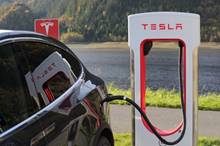 On today’s road, Tesla electric cars are
everywhere displaying the aura of creativity of the automotive industry, but
only few people could have expected it; that tells a lot about the future of
automotive industry come 2020 and moving forward.
On today’s road, Tesla electric cars are
everywhere displaying the aura of creativity of the automotive industry, but
only few people could have expected it; that tells a lot about the future of
automotive industry come 2020 and moving forward.
Automotive industry technologies makes Tesla electric cars possible and there are many other innovative solutions that would be made possible in the nearer future. This is just the beginning!
2. Self-driving cars
This has been the in the industry for a while now, and almost all major brands have entered this race. Several companies have been testing their with Google’s autonomous car technology, Waymo, leading the race. Waymo has put their technology to severe tests across multiple locations in real-world conditions and has successfully driven more than 10 million miles so far. They have started accepting applications for the – a public trial of Waymon’s self-driving vehicles which will soon hit off. Most of the companies have already launched the semi-autonomous vehicles and the evolution towards the fully autonomous car is not far from becoming a reality. This technology will help reduce all the accidents caused by human negligence and will allow humans to on their commute.
 Google is at it again by testing its
self-driving car! The self driving car is such an innovation.
Google is at it again by testing its
self-driving car! The self driving car is such an innovation.
3. Active Window displays
Many brands are working on this technology which will enable the drivers and passengers see information about objects outside their cars on their window screens. The technology is incorporated in some BMW cars which display basic information. Toyota is also working on its Human-Machine Interface (HMI) in partnership with and which will make this technology a reality sooner than expected. Imagine a windscreen which provides you information about the speed of the car, the navigation details or even displays incoming calls without you looking down at your smartphone. This technology will add many functionalities to the cars and is worth the investment it is getting.
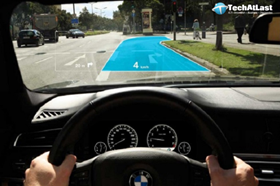 Active window displays technology lets you
view important information right from your windscreen without having to lose
track of the road.
Active window displays technology lets you
view important information right from your windscreen without having to lose
track of the road.
4. V-to-V and V-to-X communication
Vehicle to Vehicle (V-to-V) communication and Vehicle to everything (V-to-X) communication will enable our cars to talk to each other and the surroundings. Cars will be able to share vital information like location, speed, and direction of the vehicle by interacting with other and the outside objects like posts and street signs using . Many automotive companies are working on this technology in an attempt to reduce accidents. Ford is already testing its V-to-V communication technology, and we might be able to see it on the roads soon.
V-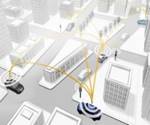 to-V
to-V 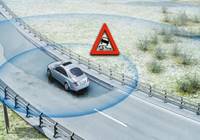 and Car-t
and Car-t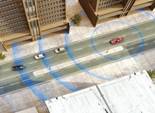 o-X Communication
o-X Communication
1 of 5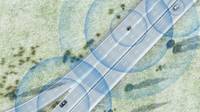
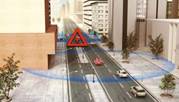
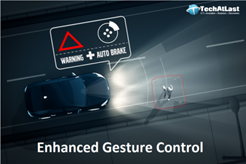 V-to-V and Car-to-5. Enhanced Gesture
Control
V-to-V and Car-to-5. Enhanced Gesture
Control
This technology is not entirely new as we already have cars with Multi Media Interface (MMI) installed in them. This feature allows the driver to enter characters using a touchpad and dictate to the car and the associated apps to do a particular task. It can be used to dial a number, enter an address for or play a song by simply moving your finger over the touchpad. The technology makes driving easier and more enjoyable.
6. Intuitive safety features
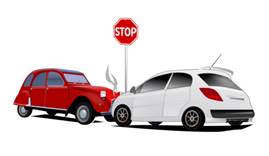 So far, we have witnessed features that
keep those inside the car safe in case of an accident. But how about a
technology that prevents your car accident from happening in the first place.
To achieve this, automakers came up with a “pre-safe” system which is an
improvement on the active safety measures of a vehicle.
So far, we have witnessed features that
keep those inside the car safe in case of an accident. But how about a
technology that prevents your car accident from happening in the first place.
To achieve this, automakers came up with a “pre-safe” system which is an
improvement on the active safety measures of a vehicle.
Scenario: “A car in front of you suddenly stops, and a potential impact is inevitable to sense the danger and automatically apply the brake pedal. The system overrides your decision and brings the car to a halt without you applying the brakes.”
Auto companies like Mercedes even went one step further and are working on airbags that will increase the stopping power by twice. This technology will help prevent an accident or at least mitigate the effects of a collision.
Intuitive safety features to prevent accidents by default. It will override human control and instructions in order to avert accidents. It is another great innovation that is already introduced to the automotive industry technologies that will shake the world in coming months.
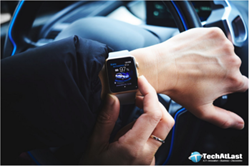 7. Artificial Intelligence and Machine
Learning
7. Artificial Intelligence and Machine
Learning
Cars are no more used solely as a means of transportation from one point to another. The automobile manufacturers are shifting their focus towards (AI) and (ML) and rightly understand the important role of these breakthrough technologies in the future of the automotive industry. The auto manufacturers have joined hands with some of the best minds in the tech industry to devise powerful algorithms that will create highly autonomous systems and ease the entire driving experience. Automakers are investing in technology to make vehicles smart and intelligent devices that will understand driver’s preferences, connect to smartphones and take , set up the infotainment system and even take decisions without human interaction. Artificial Intelligence will also lead to predictive vehicle technology which will inform the owner whether or not the vehicle needs service from a mechanic. The technology will be able to estimate car’s performance, set up appointments in real time and inform users of any measures based on car’s mileage, condition and other relevant factors which are also used in the valuation of cars.
Критерии оценивания
Чтение с пониманием основного содержания прочитанного (ознакомительное)
Оценка «5» ставится обучающемуся, если он понял основное содержание текста, может выделить основную мысль, определить основные факты, умеет догадываться о значении незнакомых слов из контекста, либо по словообразовательным элементам, либо по сходству с родным языком. Скорость чтения иноязычного текста может быть несколько замедленной по сравнению с той, с которой обучающийся читает на родном языке. Заметим, что скорость чтения на родном языке у обучающихся разная.
Оценка «4» ставится обучающемуся, если он понял основное содержание оригинального текста, может выделить основную мысль, определить отдельные факты. Однако, у него недостаточно развита языковая догадка, и он затрудняется в понимании некоторых незнакомых слов, он вынужден чаще обращаться к словарю, а темп чтения более замедленен.
Оценка «3» ставится обучающемуся, который не совсем точно понял основное содержание прочитанного, умеет выделить в тексте только небольшое количество фактов, совсем не развита языковая догадка.
Оценка «2» выставляется обучающемуся в том случае, если он не понял текст или понял содержание текста неправильно, не ориентируется в тексте при поиске определенных фактов, не умеет семантизировать незнакомую лексику.
4. Самостоятельная работа «Виды наземного транспорта»
Different kind of land transport
What was the reaction of the people after the invention of the steam engine?
In Washington the story is told of the Patent Office who in the early thirties of the last century suggested that the Office be closed because «everything that could possibly be invented had been invented». People experienced a similar feeling after the invention of the steam engine.
But there was a great need for a more efficient engine than the steam engine, for one without a huge boiler, an engine that could quickly be started and stopped. This problem was solved by the invention of the international combustion engine.
Who introduced the first cheap motor car?
The first practical internal combustion engine was introduced in the form of a gas engine by the German engineer N. Otto in 1876.
Since then motor transport began to spread in Europe very rapidly. But the person who was the first to make it really popular was Henry Ford, an American manufacturer who introduced the first cheap motor car, the famous Ford Model «T».
When did diesel-engine Lorries become general?
The rapid development of the internal combustion engine led to its use in the farm tractors, thereby creating a revolution in agriculture. The use of motor vehicles for carrying heavy loads developed more slowly until the 1930s when diesel-engined Lorries became general.
The motor cycle steadily increased in popularity as engines and tyres became more reliable and roads improved. Motor cycles were found well suited for competition races and sporting events and were also recognized as the cheapest form of fast transport.
When were the trams introduced first?
Buses were started in Paris in 1820. In 1828 they were introduced in London by George Shillibeer, a coach builder who used the French name Omnibus which was obtained from the Latin word meaning «for all». His omnibuses were driven by three horses and had seats for 22 passengers. Then in then 20th century reliable petrol engines became available, and by 1912 the new motor buses were fast replacing horse-driven buses.
Trams were introduced in the middle of the 19th century. The idea was that, as the rails were smoother than the roads, less effort was needed to pull a tram than a bus. The first trams were horse-drawn but the later trams were almost all driven by electricity. The electric motor driving the tram was usually with electric current from overhead wires. Such wires are also used by trolleybuses, which run on rubber tyres and do not need rails.
Another form of transport used in London, Paris, Berlin, Moscow, St.Petersburg,
Kiev and some other crowded cities is the underground railway.
London’s first underground railway of the «tube» type was opened in 1863, the Moscow underground in 1935.
What do the longest oil pipe-lines connect?
The pipe-lines, which were in use by the ancient Romans for carrying water supplies to their houses, are now mainly used to transport petroleum. The first pipe-line of this kind was laid in Pennsylvania, the United States, in 1865.
Some of the longest oil pipe-lines connect oil-fields in Iraq and near the Persian Gulf with ports on the Mediterranean coast. A famous Pipe-line Under the Ocean was laid across the English Channel in 1944.
What are the cableways used for?
A form of transport which is quite common in some mountainous parts of the world, especially in Switzerland, is the aerial cableway. Cableways are used at nearly all winter sport centers to pull or carry skiers to the top of the slopes. Cableways are used by many Alpine villages which lie high up the mountain-sides for bringing up their supplies from the valley below.
1. Распределите правильно слова, в соответствии с развитием транспорта
Omnibus, cableway, steam engines, pipe-lines, motor cars, diesel engines
2. Найдите в правой колонке русские эквиваленты английских слов и словосочетаний:
|
Invention of the steam engines |
усилие
|
|
efficient engine |
дизельный двигатель
|
|
internal combustion engine |
омнибус
|
|
motor transport |
изобретение парового двигателя
|
|
The rapid development |
бензин для транспорта
|
|
diesel-engine |
троллейбусы
|
|
Trams |
продуктивный двигатель
|
|
Omnibuses |
связь с нефтяной сферой
|
|
horse-driven buses |
двигатель внутреннего сгорания
|
|
Effort |
моторный транспорт
|
|
The electric motor |
трамваи
|
|
trolleybuses |
лошадиная сила
|
|
pipe-lines |
электрический мотто
|
|
transport petroleum |
трубопровод
|
|
connect oil-fields |
бензин
|
3. Закончите предложения, выбрав их из текста
1. People experienced a similar feeling after the….
2. The first practical internal combustion engine was introduced in the form of a gas engine by…
3. The use of motor vehicles for carrying heavy loads developed more slowly until…
4. The first trams were horse-drawn but the later trams were…
5. The first pipe-line of this kind was laid…
6. A form of transport which is quite common in some mountainous parts of the world, especially in Switzerland, is…
5. Упражнения "Предложения с оборотами There is/There are"
1. Опишите свой город, используя обороты There is/There are. Составьте утвердительные (+) и отрицательные (-) предложения.
Н-р: a theatre (+) – There is a theatre in the town. (В городе есть театр.)
1. two cinemas (+)
2. a lake (-)
3. four castles (+)
4. ten restaurants (-)
5. a zoo (+)
6. 5-star hotels (-)
7. three banks (+)
8. many tourists (+)
2. Согласитесь или опровергните следующие утверждения. Дайте правильный ответ.
Н-р: There are 50 minutes in one hour. (В одном часе 50 минут.) – No, there aren’t. There are 60 minutes in one hour. (Нет. В одном часе 60 минут.)
1. There are 10 planets in the Solar system.
2. There are 7 days in a week.
3. There are 20 months in a year.
4. There are 7 fingers on one hand.
5. There is one nose on the face.
3. Расставьте слова в утвердительных, отрицательных и вопросительных предложениях по порядку.
1. a market – is – the river – there – near
2. TV – there – a good film – on – is
3. any – in the sky – there – clouds – aren’t
4. in my coffee – is – sugar – any – there ?
5. sailors – are – in the boat – five – there
4. Переведите предложения.
1. Рядом с отелем есть чистый пляж.
2. На диване три кошки.
3. В холодильнике есть бутылка молока.
4. В корзине нет клубники.
5. На автобусной остановке есть люди?
6. В твоей сумке есть зеркало?
7. В этом парке нет туалета.
8. В нашем саду много цветов.
9. Под столом зеленый мяч.
10. За дверью никого нет.
5. Задайте к предложениям вопросы, начиная с предлагаемых слов.
1. There are four elephants in the zoo. (How many …?)
2. There is a lot of snow in February. (Is …?)
3. There is some fish on the plate. (What … ?)
4. There are no cars in the car park. (Are … ?)
5. There are ancient walls around the city. (What … ?)
Ответы:
1.
1. There are two cinemas in the town. (В городе есть два кинотеатра.)
2. There is no lake in the town. (В городе нет озера.)
3. There are four castles in the town. (В городе есть 4 замка.)
4. There aren’t ten restaurants in the town. (В городе нет 10 ресторанов.)
5. There is a zoo in the town. (В городе есть зоопарк.)
6. There aren’t any 5-star hotels in the town. (В городе нет 5-звездочных отелей.)
7. There are three banks in the town. (В городе есть три банка.)
8. There are many tourists in the town. (В городе много туристов.)
2.
1. No, there aren’t. There are 9 planets in the Solar system. (Нет. В Солнечной системе 9 планет.)
2. Yes, there are. There are 7 days in a week. (Да. В неделе 7 дней.)
3. No, there aren’t. There are 12 months in a year. (Нет. В году 12 месяцев.)
4. No, there aren’t. There are 5 fingers on one hand. (Нет. На одной руке 5 пальцев.)
5. Yes, there is. There is one nose on the face. (Да. На лице один нос.)
3.
1. There is a market near the river. (У реки находится рынок.)
2. There is a good film on TV. (По ТВ идет хороший фильм.)
3. There aren’t any clouds in the sky. (В небе нет облаков.)
4. Is there any sugar in my coffee? (В моем кофе есть сахар?)
5. There are five sailors in the boat. (В лодке 5 моряков.)
4.
1. There is a clean beach near the hotel.
2. There are three cats on the sofa.
3. There is a bottle of milk in the fridge.
4. There aren’t any strawberries in the basket.
5. Are there any people at the bus stop?
6. Is there a mirror in your bag?
7. There is no toilet in this park.
8. There are many (a lot of) flowers in our garden.
9. There is a green ball under the table.
10. There isn’t anyone behind the door.
5.
1. How many elephants are there in the zoo? (Сколько слонов в зоопарке?)
2. Is there a lot of snow in February? (В феврале много снега?)
3. What is there on the plate? (Что находится на тарелке?)
4. Are there any cars in the car park? (На автостоянке есть машины?)
5. What is there around the city? (Что находится вокруг города?)
Лексико-грамматические упражнения
|
Оценка |
Лексика |
Грамматика |
Фонетика и интонация |
Правописание |
|
«5» |
Обучающийся использует лексику и простые структуры отлично, также использует сложные семантические структуры. |
Обучающийся не допускает грамматические ошибки. |
Обучающийся демонстрирует правильное и понятное произношение и ударение. |
Обучающийся не допускает ошибки в правописании. |
|
«4» |
Обучающийся использует лексику и простые структуры правильно, допускает ошибки при использовании сложных семантических структуры. |
Обучающийся редко допускает грамматические ошибки. |
Обучающийся демонстрирует правильное и понятное произношение и ударение с некоторыми ошибками, которые редко мешают пониманию. |
Обучающийся редко допускает ошибки в правописании, которые не мешают пониманию. |
|
«3» |
Обучающийся использует лексику и простые структуры в основном правильно. |
Обучающийся допускает некоторые грамматические ошибки. |
Обучающийся демонстрирует часто неправильное и непонятное произношение и ударение, которые иногда мешают пониманию. |
Обучающийся допускает ошибки в правописании, которые иногда мешают пониманию. |
|
«2» |
Обучающийся использует ограниченную лексику, не соответствующую уровню знания языка, допускает ошибки. |
Обучающийся часто допускает грамматические ошибки. |
Обучающийся демонстрирует неправильное и непонятное произношение и ударение, которые мешают пониманию. |
Обучающийся допускает ошибки в правописании, которые мешают пониманию. |
6. Metals and materials used in the automobile industry
Task 1. Match the words with their transcriptions and translate them.
Learn them by heart
When we think of cars, we think of metal and materials.
1.glass a) [ˈrʌbə]
2. plastic b) [sti:l]
3. steel c) [wʊd]
4. aluminium d) [ˈleðə]
5.metal e) [ˈmetl]
6. textile f) [æljʊˈmɪnɪə m]
7.wood g) [ˈplæstɪk]
8.rubber h) [ˈtekstaɪl]
9.leather i) [ɡlɑ:s]
Task 2. What car parts are made of what material?
Work with a partner to complete the table.
|
Material
|
Car part(s)
|
|
steel
|
|
|
wood
|
|
|
sheet metal
|
|
|
magnesium
|
|
|
glass plastic
|
|
|
rubber
|
|
|
aluminum
|
|
|
leather
|
|
Task 3. Answer the questions.
1/ Body- What is the body made of?
The body is made of metal and aluminum.
2/ Wheels - What are the wheels made of?
The wheels are made of rubber and metal.
3/ Windscreen wiper - What is the windscreen wiper made of?
The windscreen wiper is made of plastic.
4/ Windscreen- What is the windscreen made of?
The windscreen is made of glass.
5/ Headlight- What is the headlight made of?
The headlight is made of glass and plastic.
6/ Steering wheel- What is the steering wheel made of?
The steering wheel is made of wood, leather, metal.
7/ Bonnet- What is the bonnet made of?
The bonnet is made of metal and aluminum.
8/ Tire- What is the tire made of?
The tire is made of rubber.
9/ The number plate- What is the number plate made of?
The number plate is made of metal
Task 4. Complete the sentences about materials and their properties
with the following words:
|
shatterproof light corrosion-resistant durable elastic natural rigid malleable |
1.Wood is very often used in interiors because it looks...and warm.
2.Aluminum and magnesium are important in car manufacturing because they are...and therefore good for weight-saving.
3.Rubber should be able to withstand great temperature differences while staying... In other words, it shouldn’t become brittle.
4.Windscreens are made of special... glass to protect drivers in accidents.
5.Fabrics used in cars need to be... and not look old too quickly.
6.Steel is used for load-bearing parts because it is...
7.Sheet metal is used for large car parts because it is...and
dent-resistant.
8.Aluminum is ideal for bumpers and other body parts because it is..
7. Тема: « Инструменты (Tools). Профессиональная лексика»
Задание 1
Найдите транскрипцию и запишите слова в словарь
Vocabulary:
Flashlight – карманный фонарик
Fuse – предохранитель
Jack – домкрат
Oil - масло
Pliers – клещи
Screwdriver – отвертка
Spare part – запчасть
Spark plug / sparking plug – свеча зажигания Tool – инструмент
Water – охлаждающая жидкость
Wrench – гаечный ключ
Car park / parking lot – парковка, стоянка
Car wash – автомойка
Filling station / gas station – заправочная станция
Garage [gə'rɑ:ʒ] – крытая парковка, парковка в здании
Repair shop - мастерская
Toll road – платная дорога
Turnpike – место взимания дорожного сбора на платной дороге
Задание 2
Выполните упражнения (письменно)
Ø  Назовите инструменты для ремонта автомобиля
по-английски
Назовите инструменты для ремонта автомобиля
по-английски
2
1

3
4

5
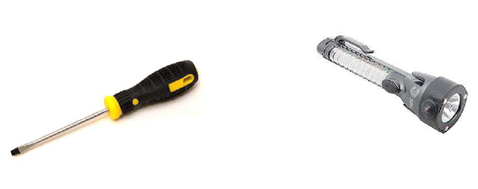
![]()
![]() 6
6
Ø Найдите в правой колонке русские эквиваленты английских слов и словосочетаний:
1.internal combustion engine а. поршень
2.combustion chamber b. верхняя мертвая точка
3.stroke с. четырехтактный двигатель
4.piston d. коленчатый вал
5.top dead centre е. отверстие клапана
6.bottom dead centre f. двигатель внутреннего сгорания
7.four-stroke cycle engine g. нижняя мертвая точка
8.two-cycle engine h. топливная система
9.crankshaft i. такт впрыска (топлива)
10.intake stroke j. двухтактный двигатель
11.valve opening k. камера сгорания
12.fuel system 1. ход, такт (поршня)
13.power stroke m. выхлоп
14.exhaust n. рабочий ход поршня
Ø Переведите на русский язык встречающиеся в тексте интернациональные слова:
cylinder, automobile, limit, centre, cycle, compression, gas.
Задание 3
Прочтите весь текст (устно), а абзацы 2 и 5 в письменной форме.
THE ENGINE
1.The engine is the source of power that makes the car move. It is usually called an internal combustion engine because gasoline is burned within its cylinders or combustion chambers. Most automobile engines have six or eight cylinders.
2.The operating cycle of the four-stroke engine that takes place in the engine cylinder can be divided into four strokes. The upper limit of the piston movement is called the top dead centre. The lower limit of piston movement is called the bottom dead centre. A stroke is the piston movement from the top dead centre to the bottom dead centre or from bottom dead centre to the top dead centre. In other words, the piston the completes a stroke each time it changes the direction of its motion.
3.Where the entire cycle of events in the cylinder requires four strokes (two crankshaft revolutions), the engine is called a four-stroke cycle engine. The four strokes are: intake, compression, power and exhaust.
4.Two-cycle engines have also been made, and in such engines the entire cycle of events is completed in two strokes or one revolution of the crankshaft.
5.On the intake stroke the intake valve is opened. The mixture of air and
vaporized gasoline is delivered into the cylinder through the inlet valve. On the
compression stroke the inlet valve is closed so that the mixture can be compressed.
On the power stroke both valves (inlet and exhaust) are closed in order to raise
pressure during the mixture combustion. On the exhaust stroke the exhaust valve is
opened to exhaust the
residual
Ø Найдите соответствующие ответы на вопросы и напишите их в той последовательности, в которой заданы вопросы:
Вопросы
1.What is the top dead centre?
2.What is the bottom dead centre?
3.When the engine is called a four-stroke cycle engine?
4.When the engine is called a two-cycle engine?
5.What kind of strokes can the events in the engine cylinder be divided into?
Чтение с полным пониманием содержания (изучающее)
Оценка «5» ставится обучающемуся, когда он полностью понял несложный оригинальный текст. Он использовал при этом все известные приемы, направленные на понимание читаемого (смысловую догадку, анализ).
Оценка «4» выставляется обучающемуся, если он полностью понял текст,
но многократно обращался к словарю.
Оценка «3» ставится, если обучающийся понял текст не полностью,
не владеет приемами его смысловой переработки.
Оценка «2» ставится в том случае, когда текст обучающимся не понят.
Он с трудом может найти незнакомые слова в словаре.
Работа с текстом (чтение, ответы на вопросы.)
|
Отметка |
Критерии оценивания |
|
«5» |
Обучающийся понял содержание текста и ответил правильно и полно на все вопросы преподавателя. |
|
«4» |
Обучающийся понял содержание текста и ответил правильно и полно на 2 вопроса. На один вопрос не ответил или дал неправильный ответ. Обучающийся понял содержание текста и дал правильные, но неполные ответы на все 3 вопроса. |
|
«3» |
Обучающийся понял содержание текста, но ответил правильно и полно только на 1 вопрос. На 2 остальных вопроса обучающийся не ответил или дал неправильные ответы. |
|
«2» |
Обучающийся не понял содержание текста и не дал правильные ответы. |
8. Части автомобиля. Авто снаружи, авто внутри. Введение новой профессионально - ориентированной лексики. Работа с текстами.
Задание 1
Запишите слова в словарь
a tool [ tuːl ] инструмент
a spanner[ ˈspæn.ər ] балонный ключ
a service station[ ˈsɜːvɪs ˈsteɪʃn ] станция технического обслуживания
a wheel[ wiːl ] колесо
a device[ dɪˈvaɪs ] устройство
a nut[ nʌt ] гайка
a jack[ dʒæk ] домкрат
an auto mechanic[ ˈɔː.təʊ məˈkæn.ɪk ] автомеханик
an assistant[ əˈsɪstənt] помощник
Задание 2
Впишите пропущенное слово:
1.
Give me the_____![]() , please.
, please.
2.
Take out the ____![]() .
.
3.
Give me the____![]() , please.
, please.
Задание 3
Разгадайте кроссворд
![]()
Across
2. Самолет
4. Автобус
6. Троллейбус
8. Такси
10. Мотоцикл
12. Космический корабль
14. Машина
Down
1. Баржа
3. Лодка
5. Транспортное средство
7. Вертолет
9. Скутер, самокат
11. Грузовик
13. Яхта
15. Велосипед
17. Поезд
Задание 4
Соотнесите тип автомобиля с картинкой, переведите слова
![]()
Задание 5
Прочитайте и переведите диалог. Составьте свою версию диалога.
Customer: Good morning.
![]()
Dealer: Good morning, sir. May I help you?
C: I want to buy a new car.
D: DO you have anything special in mind?
C: It shouldn't be either an expensive car or a big one.
D: I see. What about a Honda? It's a good and rather inexpensive car. One of these cars is to the right of you.
C: How much is it?
D: 6900 dollars.
C: May I see it?
D: It's right this way. It's a very popular model. Let's take a look. Here we are. This car will get you an excellent gas mileage. Do you like the color?
C: Yes, dark blue is my favorite color.
Критерии оценивания навыков говорения. Диалогическая речь
«5» - отлично
Задание выполнено полностью: цель общения достигнута; тема раскрыта в полном объеме.
Демонстрирует хорошие навыки и умения речевого взаимодействия с партнером: умеет начать, поддержать и закончить беседу;
Соблюдает очерёдность при обмене репликами,
Соблюдает нормы вежливости.
Используемый лексико-грамматический материал соответствует поставленной коммуникативной задаче. Демонстрируется разнообразный словарный запас.
Речь понятна: звуки произносятся правильно, без фонематических ошибок.
«4» - хорошо
Задание выполнено: цель общения достигнута, но тема раскрыта не в полном объеме
Демонстрирует навыки и умения речевого взаимодействия с партнером: умеет начать, поддержать и закончить беседу; но демонстрирует наличие проблемы в понимании собеседника, не всегда соблюдает нормы вежливости.
Используемый лексико-грамматический материал соответствует поставленной коммуникативной задаче. Лексико - грамматические ошибки практически отсутствуют.
Речь понятна: все звуки произносятся правильно, допускаются фонематическая ошибка, не меняющая значение высказывания.
«3» - удовлетворительно
Задание выполнено частично: цель общения достигнута не полностью; тема раскрыта в ограниченном объеме.
Демонстрирует несформированность навыков и умения речевого взаимодействия с партнером: умеет начать, но не стремится поддержать беседу и зависит от помощи со стороны собеседника.
Демонстрируется достаточный словарный запас, но наблюдается некоторое затруднение при подборе слов и неточности в их употреблении. Допускаются не более 3 языковых ошибок.
Речь понятна: все звуки в потоке речи произносятся правильно, соблюдается правильный интонационный рисунок.
«2» - неудовлетворительно
Задание не выполнено: цель общения не достигнута; тема не раскрыта.
Не может поддержать беседу.
Недостаточный словарный запас, неправильное использование грамматических структур, много - численные языковые ошибки
Речь почти не воспринимается на слух из-за неправильного произношения многих звуков и многих фонематических ошибок.
Задание 6
Запишите слова в словарь
и используйте их при выполнении упражнений
Parts of a car
Vocabulary:
Accelerator [ək'seləreitə] – педаль газа
Battery – аккумулятор
Bonnet ['bɔnit] / hood – капот
Boot / trunk – багажник
Brakes – тормоза
Bumper – бампер
Clutch – сцепление
Engine ['enʤin] – двигатель
Fan belt – ремень вентилятора
First gear – первая скорость
Gear lever ['giə 'li:və] / gearshift – рычаг включения передач
Headlights – фары
Motor – мотор
Mirror - зеркало
Neutral ['nju:trəl] – нейтральная скорость Radiator – радиатор
Reverse [ri'vɜ:s] – задний ход
Shift – включать (передачу)
Silencer / muffler – выхлопная система (труба)
Tail light – задний свет
Tire, tire – шина
Transmission [trænz'miʃn] – коробка переменных передач (МКПП) Wheel ['wi:l] – колесо
Windscreen – лобовое стекло
Wiper – стеклоочиститель
Соотнесите внешние части автомобиля с картинкой, переведите слова (письменно)
![]()
![]()
2. Соотнесите внутренние части автомобиля, переведите слова (письменно)
Задание 7
Найдите в правой колонке русские эквиваленты английских слов и словосочетаний (письменно)
|
1.body |
а. тормоза срабатывают |
|
2.car wheels |
b. силовая передача |
|
3.power train |
с. главная передача |
|
4.power plant |
d. коленчатый вал двигателя |
|
5.springs |
е. нажимать на педаль |
|
6.steering system |
f. силовая установка |
|
7.clutch |
g. колеса автомобиля |
|
8.final drive |
h. рама с осями |
|
9.engine crankshaft |
i. топливная система |
|
10.push down the pedal |
j. рулевая система |
|
11.brakes are applied |
k. сцепление |
|
12.frame with axles |
1. вспомогательные устройств
|
Задание 8
![]() Впишите название марки автомобиля, не пользуясь
подсказкой выше
Впишите название марки автомобиля, не пользуясь
подсказкой выше
9. Brake System
![]()
brakes – тормоза
drum brakes – тормоза барабанного типа
disc brakes – дисковые тормоза
master cylinder - главный тормозной цилиндр
Brakes are used to slow or stop the car where it is necessary. It is one of the most important mechanisms of the car as upon its proper performance the safety of passengers depends. Car brakes can be divided into two types, namely: drum brakes and disc brakes. The drum type may be either a band brake or a shoe brake. Depending on their functions, the automobile has foot brakes and hand brakes (parking brakes). According to their mode of operation, the brakes are classified as: mechanical brakes, hydraulic brakes, airbrakes, electric brakes. Brakes are controlled by the brake pedal.
Most braking systems in use today are hydraulic. This system consists of a master cylinder mounted on the car frame and wheel cylinders. When the driver pushes down on the brake pedal, it forces the piston to move in the master cylinder and brake fluid is delivered from 11 to the wheel cylinders. The piston movement causes brake shoes to move and the brakes are applied (the brake shoes are pressed against the brake drums). The air brake uses compressed air to apply the braking force to the brake shoes. Electric brakes use electromagnets to provide the braking effort against the brake shoes.
Formerly brakes were applied only to the two rear wheels, but now all cars are equipped with all-wheels brakes. Today many improvements are being made in brakes.
1 _ brake pedal 6 _ power brakes 2 _ disc brake 7 _ brake pad
3 _ drum brake 8 _ parking brake
4 _ brake shoe 9 _ caliper 5 _ master cylinder
A a thin block used to apply friction to a disc B a lever drivers press to slow a car
C a piece of metal forced against a brake drum
D a brake system using a brake booster
E a brake that uses pads and discs to stop a car F a brake that is separate from the main system G a brake ha uses brake shoes to stop a car
H a contain brake fluid
I a device a aids brake pads
1. Brakes are used for... a. disc brakes and drum brakes
2. Brakes are one of ... b. the driver pushes down on the pedal
3. Вrakes may be of 2 types:... c. the brake pedal
4. Brakes are applied by d. stopping the car
5. Brakes are applied when e. the most important mechanism of the car
Чтение с пониманием основного содержания прочитанного (ознакомительное)
Оценка «5» ставится обучающемуся, если он понял основное содержание текста, может выделить основную мысль, определить основные факты, умеет догадываться о значении незнакомых слов из контекста, либо по словообразовательным элементам, либо по сходству с родным языком. Скорость чтения иноязычного текста может быть несколько замедленной по сравнению с той, с которой обучающийся читает на родном языке. Заметим, что скорость чтения на родном языке у обучающихся разная.
Оценка «4» ставится обучающемуся, если он понял основное содержание оригинального текста, может выделить основную мысль, определить отдельные факты. Однако, у него недостаточно развита языковая догадка, и он затрудняется в понимании некоторых незнакомых слов, он вынужден чаще обращаться к словарю, а темп чтения более замедленен.
Оценка «3» ставится обучающемуся, который не совсем точно понял основное содержание прочитанного, умеет выделить в тексте только небольшое количество фактов, совсем не развита языковая догадка.
Оценка «2» выставляется обучающемуся в том случае, если он не понял текст или понял содержание текста неправильно, не ориентируется в тексте при поиске определенных фактов, не умеет семантизировать незнакомую лексику.
Работа с текстом (чтение, ответы на вопросы.)
|
Отметка |
Критерии оценивания |
|
«5» |
Обучающийся понял содержание текста и ответил правильно и полно на все вопросы преподавателя. |
|
«4» |
Обучающийся понял содержание текста и ответил правильно и полно на 2 вопроса. На один вопрос не ответил или дал неправильный ответ. Обучающийся понял содержание текста и дал правильные, но неполные ответы на все 3 вопроса. |
|
«3» |
Обучающийся понял содержание текста, но ответил правильно и полно только на 1 вопрос. На 2 остальных вопроса обучающийся не ответил или дал неправильные ответы. |
|
«2» |
Обучающийся не понял содержание текста и не дал правильные ответы. |
Критерии оценивания лексико-грамматического теста
Оценка «2» - процент правильных ответов менее 70%
Оценка «3» - процент правильных ответов составляет 79-70%
Оценка «4» – процент правильных ответов составляет 89-80%
Оценка «5» – процент правильных ответов составляет 100-90%
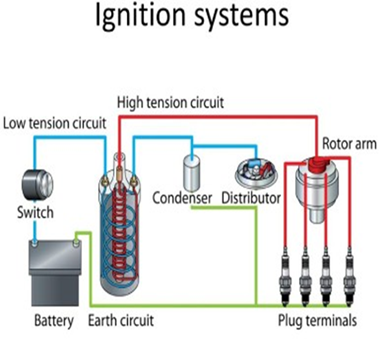
spark plug – свеча зажигания
steering column - рулевая колонка
ignite – зажигать
combustion chamber-камера сгорания
coil- катушка
startermoto-пусковой двигатель
In ignition system enables the enables to start and keep running. It depends on the type of the engine and the fuel used. Petrol engines are typically ignited a precisely timed spark, and diesel engines by compression heating.
The ignition is located either on the side of the steering column or on the dashboard. It is a multifunctional switch, into which you insert your key, in order to energize the electrical circuits and activate your starter motor.
The spark plug ignites the fuel and air mixture in each cylinder. This process is called “combustion” and it takes places in the “combustion chamber”.
Electricity for the igniting process or ignition is supplied by the alternator and a battery. The current is then carried to a coil, then to a distributor and finally to the spark plugs.
The car’s starting system consists of two components: the electric starter motor and the starter solenoid. As you turn the ignition key to the start position, the starter solenoid gets activated and this energizes the starter motor. The starter motor spins the engine a few revolutions allowing the combustion process to begin and the car to start moving.
1 _ If an ignition switch is bad, a car's lights won't work.
2 _ The article recommends that professionals handle all work with batteries. 3 _ A malfunctioning alternator could lead to a dead battery.
1 Attach these cables to your battery before the
2 When I turned the key, I heard a(n) sound.
3 Electric current is sent by the
4 A bad can lead a dead battery.
5 When the engine doesn't , the car doesn't start.
6 A (n) is attached a battery's 2n8egative terminal and completes the circuit.
Чтение с полным пониманием содержания (изучающее)
Оценка «5» ставится обучающемуся, когда он полностью понял несложный оригинальный текст. Он использовал при этом все известные приемы, направленные на понимание читаемого (смысловую догадку, анализ).
Оценка «4» выставляется обучающемуся, если он полностью понял текст,
но многократно обращался к словарю.
Оценка «3» ставится, если обучающийся понял текст не полностью,
не владеет приемами его смысловой переработки.
Оценка «2» ставится в том случае, когда текст обучающимся не понят.
Он с трудом может найти незнакомые слова в словаре.
Критерии оценивания лексико-грамматического теста
Оценка «2» - процент правильных ответов менее 70%
Оценка «3» - процент правильных ответов составляет 79-70%
Оценка «4» – процент правильных ответов составляет 89-80%
Оценка «5» – процент правильных ответов составляет 100-90%
steering wheel – рулевое колесо
rack – рейка, стойка
pinion - шестерня
spindle - шпиндель
A steering wheel is a type of steering control in vehicles. The is the part of the steering system that is manipulated by the driver; the rest of the steering system responds to such driver inputs. This can be through direct mechanical contact as in recirculating ball or rack and pinion steering gears, without or with the assistance of hydraulic power steering, HPS, or as in some modern production cars with the assistance of computer-controlled motors, known as electric power steering.
Rack and pinion steering is one of the most common steering systems used today. But few people actually know how it works. It all starts with the steering wheel. It turns a steering shaft, which is attac2h9ed to the pinion. The pinion, a gear, locks
with the rack, another gear. So when you rotate the wheel, the steering shaft turns the pinion. The pinion then turns the rack. Attached to each side of the rack are inner and outer tie rods. These rods connect to the spindles. As the rack pulls and pushes the rods, they move the spindles. And it is the spindles that hold the wheels. By turning the spindle, the rods turn the wheel.
Most modern cars also have power steering. Most modern cars also have power steering. In these systems, the rack has a cylinder with a piston in the middle. The power steering pump supplies high pressure fluid to move the piston. This reduces the amount of force needed to turn the pinion gear and rack.
There are basic types of power steering systems found in vehicles: the hydraulic
power steering (HPS) and the electric power steering (EPS).
The hydraulic power steering uses high pressure fluid for assisting steering movements. When the driver turns the steering wheel, it opens up the pressurized fluid in such a way that helps to turn the wheels in the required direction.
The electric power steering works the help of an electric motor and an electronic
control unit which has some sensors.
1 _ spindle
2 _ rotate
3 _ steering shaft 4 _ power steering 5 _ rack
A - a system that makes turning easier B - a gear that moves the tie rods
C – to turn something in a circular motion
D – a piece that connects the steering wheel to the pinion E – a part that holds wheels in place
1. The is connected to the rack and spindle.
2. High pressure fluid is moved by the
3. ![]() The rack is turned
by the
The rack is turned
by the
4. Every turn starts
by moving the![]()
5. The is a combination of several parts, including wheels, rods, and gears.
What is a steering wheel used for ?
What kinds of steering wheel systems are there ? What is the hydraulic power steering ?
How does the electric power steering work?
Работа с текстом (чтение, ответы на вопросы.)
|
Отметка |
Критерии оценивания |
|
«5» |
Обучающийся понял содержание текста и ответил правильно и полно на все вопросы преподавателя. |
|
«4» |
Обучающийся понял содержание текста и ответил правильно и полно на 2 вопроса. На один вопрос не ответил или дал неправильный ответ. Обучающийся понял содержание текста и дал правильные, но неполные ответы на все 3 вопроса. |
|
«3» |
Обучающийся понял содержание текста, но ответил правильно и полно только на 1 вопрос. На 2 остальных вопроса обучающийся не ответил или дал неправильные ответы. |
|
«2» |
Обучающийся не понял содержание текста и не дал правильные ответы. |
fuel – топливо
fuel pipe – топливопровод fuel tank – топливный бак fuel pump – топливный насос
camshaft - распределительный вал
31
optimum ratio - оптимальное соотношение
The fuel system consists of a tank, a fuel pipe, a pump and a carburetor.
The fuel is stored in a fuel tank. The fuel tank is connected to a fuel pipe. The fuel pipe carries fuel to the fuel pump. This pump can be either mechanic or electric on operation. Electric pumps are situated near the tank but a mechanic pump is located near the engine because it is driven by the camshaft.
The fuel pump is connected to the carburetor. There the fuel is mixed with air. The optimum ratio of air to petrol in the fuel mixture is 15 parts of air to 1 part of petrol.
The fuel and air are compressed by the piston and they are drawn into the engine. In the engine the fuel and air are burnt and produce power.
Modern fuel supply systems use a fuel tank, fuel pump, fuel filter, fuel rail, fuel injectors, and a fuel pressure regulator to supply fuel to the engine.
1 _ fuel line
2 _ carburetor 3 _ fuel tank 4 _ fuel filter
5 _ fuel injector
A a part that mixes fuel and air
B a device that screens out dirt in the fuel' C a storage container for fuel
D a tube that delivers fuel to the engine
E a pump that delivers fuel to the combustion chamber of the engine.
Критерии оценивания
Чтение с пониманием основного содержания прочитанного (ознакомительное)
Оценка «5» ставится обучающемуся, если он понял основное содержание текста, может выделить основную мысль, определить основные факты, умеет догадываться о значении незнакомых слов из контекста, либо по словообразовательным элементам, либо по сходству с родным языком. Скорость чтения иноязычного текста может быть несколько замедленной по сравнению с той, с которой обучающийся читает на родном языке. Заметим, что скорость чтения на родном языке у обучающихся разная.
Оценка «4» ставится обучающемуся, если он понял основное содержание оригинального текста, может выделить основную мысль, определить отдельные факты. Однако, у него недостаточно развита языковая догадка, и он затрудняется в понимании некоторых незнакомых слов, он вынужден чаще обращаться к словарю, а темп чтения более замедленен.
Оценка «3» ставится обучающемуся, который не совсем точно понял основное содержание прочитанного, умеет выделить в тексте только небольшое количество фактов, совсем не развита языковая догадка.
Оценка «2» выставляется обучающемуся в том случае, если он не понял текст или понял содержание текста неправильно, не ориентируется в тексте при поиске определенных фактов, не умеет семантизировать незнакомую лексику.
![]()
cooling system – система охлаждения
water pump – водяной насос
fan – вентятор
low freezing point - низкая точка замерзания
high boiling point - высокая точка кипения
freeze - замерзать
The main function of the cooling system is to cool the engine and to keep it from overheating. Another important job of the cooling system is to allow the engine to heat up as quickly as possible and then to keep the engine at a constant temperature because when the engine is cold its components wear out faster and the engine is less efficient and emits pollution.
There are two types of cooling systems used in modern cars: air-cooled and liquid-
cooled systems.
Most cars are equipped with liquid-cooled systems. The coolant flows around the engine and then passes through the radiator. Then it passes through the water pump and flows around the engine again. There are some stages of the cooling process. First, the liquid flows around the engine. The engine is cooled and liquid is heated. The hot water enters the radiator through the upper hose. Then it flows down through the radiator and here it is cooled by air. The air is pulled by a fan. This fan is turned by a belt which is driven by the engine. The cooled liquid leaves the radiator through the lower hose. The coolant is pumped around the engine again.
Modern cars operate in a wide variety of temperatures. So the fluid used to cool the engine must have a very and a and hold a lot of heat. Water freezes at too high a temperature to be used in car engines. The coolant used in most cars is a mixture of water and antifreeze. The recommended ratio is fifty-fifty. In other words, one part of antifreeze and one part of water.
1 _ fan
2 _ pulley
3 _ radiator
4 _ antifreeze 5 _ heater hose
6 _ cooling system
7 _ serpentine belt
A the system that keeps the engine cool
B a rubber tube that connects to the heater core C an electric device that blows air
D a device with a wheel and a grooved rim
E the device used to cool liquid in a cooling system
F a type of coolant used to prevent water from freezing
G a rubber belt that winds through pulleys
Чтение с полным пониманием содержания (изучающее)
Оценка «5» ставится обучающемуся, когда он полностью понял несложный оригинальный текст. Он использовал при этом все известные приемы, направленные на понимание читаемого (смысловую догадку, анализ).
Оценка «4» выставляется обучающемуся, если он полностью понял текст, но многократно обращался к словарю.
Оценка «3» ставится, если обучающийся понял текст не полностью, не владеет приемами его смысловой переработки.
Оценка «2» ставится в том случае, когда текст обучающимся не понят. Он с трудом может найти незнакомые слова в словаре.
lubrication system – система смазки
friction – трение
engine wear – износ двигателя
film - пленка
The delivers oil to the moving parts of the engine. As oil circulates through passages in the engine it spreads a film on the parts. Lubrication reduces friction and so minimizes engine wear. The oil also helps to cool the engine. Oil is stored in a pan under the engine. A pump circulates oil from the pan through a filter and then through lines to the engines. This filter prevents impurities from entering the engine
Task 2. Fill in the blanks with the correct words and phrases from the word bank.
1 The oil pump creates 2The screens out dirt.
3 Grease is used to engine parts.
4 Lubrication systems _ damage caused by heat.
5 Parts rubbing together cause _ _
6 Resistance to motion between two parts that causes wear and heat, 7 A fluid used for lubrication
Чтение с полным пониманием содержания (изучающее)
Оценка «5» ставится обучающемуся, когда он полностью понял несложный оригинальный текст. Он использовал при этом все известные приемы, направленные на понимание читаемого (смысловую догадку, анализ).
Оценка «4» выставляется обучающемуся, если он полностью понял текст, но многократно обращался к словарю.
Оценка «3» ставится, если обучающийся понял текст не полностью, не владеет приемами его смысловой переработки.
Оценка «2» ставится в том случае, когда текст обучающимся не понят. Он с трудом может найти незнакомые слова в словаре.
battery - аккумулятор
alternator – генератор
charge – заряд
troubleshooting – устранение проблем
fuse - предохранитель
relay – реле
Task 1. Read and translate the text
Every vehicle needs electricity to provide current for lights and other electrical equipment and to supply the necessary power for the ignition system. The electrical system is equipment in a car which provides electricity to start the engine, ignite the fuel, operate the lights, windscreen wipers, heater and air conditioner.
One of the important components of an electrical system is the battery. The electrical system starts and stops with the battery. While the vehicle is operating the electrical system is energized and recharged by the alternator that is powered by the engine. When troubleshooting an electrical problem start with the battery.
By using a voltmeter determine if the battery has enough voltage to operate the
electrical system.
There are dozens of electrical components related to the electrical system, most include one or more of the following: alternator, battery, fuse, switch, relay, computer PCM, fusible link, wire, and electrical connectors.
Task 2. Do the task
1) The electrical system is equipment in a car which provides electricity to start the engine, ignite the fuel, operate the lights, windscreen wipers, heater and air conditioner.
A) true B) false
2) When troubleshooting an electrical problem start with the battery. By using a(n)
determine if the battery has enough voltage to operate the electrical system.
Voltmeter Vehicle Dozen
Electrical system
None of the Above
3) Which of the following is equipment in a car which provides electricity to start the engine, ignite the fuel, operate the lights, windscreen wipers, heater and air conditioner?
Dozen
Voltmeter
Vehicle
Electrical system
None of the Above
4) Every vehicle needs electricity to provide current for lights and other electrical equipment and to supply the necessary power for the ______ system
Other electrical equipment Electricity
Equipment
Ignition
None of the Above
5) There are vehicle of electrical components related to the electrical system, most include one or more of the following: alternator, etc.
A) true B) false
6) There are_____________ of electrical components related to the electrical system,
most include one or more of the following: alternator,
Voltmeters Electrical system Dozens
Vehicles
None of the Above
7) While the vehicle is operating the electrical system is energized and recharged by the alternator that is powered by the engine.
A) true B) false
8) The electrical system is equipment in a car which provides electricity to start the engine, ignite the fuel, operate the lights,__________ , heater and air conditioner Components
Igniters
Other electrical equipment Equipment
None of the Above
9) One of the important components of an electrical system is the battery.
A) true B) false
10) When troubleshooting an electrical problem start with the battery. By using a voltmeter determine if the battery has enough voltage to operate the electrical system.
A) true B) false
11) The electrical system starts and stops with the battery.
A) true B) false
12) Every vehicle needs___________ to provide current for lights and other electrical equipment and to supply the necessary power for the ignition system
Ignition
Other electrical equipment Equipment
Electricity
None of the Above
13) There are dozens of electrical______________related to the electrical system, most
include one or more of the following: alternator, etc.
Components
Windscreen
wipers
Ignitions
Equipment
None of the Above
Чтение с полным пониманием содержания (изучающее)
Оценка «5» ставится обучающемуся, когда он полностью понял несложный оригинальный текст. Он использовал при этом все известные приемы, направленные на понимание читаемого (смысловую догадку, анализ).
Оценка «4» выставляется обучающемуся, если он полностью понял текст, но многократно обращался к словарю.
Оценка «3» ставится, если обучающийся понял текст не полностью, не владеет приемами его смысловой переработки.
Оценка «2» ставится в том случае, когда текст обучающимся не понят. Он с трудом может найти незнакомые слова в словаре.
Критерии оценивания лексико-грамматического теста
Оценка «2» - процент правильных ответов менее 70%
Оценка «3» - процент правильных ответов составляет 79-70%
Оценка «4» – процент правильных ответов составляет 89-80%
Оценка «5» – процент правильных ответов составляет 100-90%
13. Exhaust System
exhaust system – выхлопная система
muffler - глушитель
exhaust flow - выхлопной поток
rear axle - задний мост
stainless steel - нержавеющая сталь exhaust manifold - выхлопной коллектор
Task 1. Read and translate the text
Exhaust system components are designed for a specific engine. The pipe diameter, component length, catalytic converter size, muffler size, and the exhaust manifold design are engineered to provide proper exhaust flow, silencing, and emission levels on a particular engine.
As a rule, the hotter a muffler runs the longer it lasts. Mufflers on vehicles with catalytic converters run hotter and last longer than those on older vehicles without converters. Mufflers located ahead of the rear axle last longer than those located after of the rear axle.
Mufflers rust from the inside out. Rust is caused by moisture in the exhaust. Moisture condenses in the muffler when the engine is shut off and the muffler starts to cool.
The longevity of muffler and pipes depends on what kind of steel the components are made of, how pipes are routed under the car, where the muffler is located, and whether or not the vehicle has a catalytic converter.
Original equipment pipes made of stainless steel can last up to 10 years or more. Most aftermarket pipes are made of ordinary steel which is good for about three to five years of service. Aluminized and stainless pipes are better, but cost more.
Task 2. Do the task
1) The , component length, catalytic converter size, muffler size, and the exhaust manifold design are engineered to provide proper exhaust flow, silencing, and emission levels on a particular engine
a) longevity of muffler b) stainless pipes c) pipe diameter d) System diameter
2) rust from the inside out
3) Mufflers located ahead of the rear axle last longer than those located after of the
rear axle.
A) true B) false
4) Which of the following made of stainless steel can last up to 10 years or more?
Original equipment Most aftermarket pipes
Exhaust system components
Stainless pipes
Чтение с полным пониманием содержания (изучающее)
Оценка «5» ставится обучающемуся, когда он полностью понял несложный оригинальный текст. Он использовал при этом все известные приемы, направленные на понимание читаемого (смысловую догадку, анализ).
Оценка «4» выставляется обучающемуся, если он полностью понял текст, но многократно обращался к словарю.
Оценка «3» ставится, если обучающийся понял текст не полностью, не владеет приемами его смысловой переработки.
Оценка «2» ставится в том случае, когда текст обучающимся не понят. Он с трудом может найти незнакомые слова в словаре.
Критерии оценивания лексико-грамматического теста
Оценка «2» - процент правильных ответов менее 70%
Оценка «3» - процент правильных ответов составляет 79-70%
Оценка «4» – процент правильных ответов составляет 89-80%
Оценка «5» – процент правильных ответов составляет 100-90%
14. Transmission operation
torque - крутящий момент differential - дифференциал axle - ось
shaft- вал
gear – механизм, шестерня, передача
ratio - соотношение
reverse – задний ход
Task 1. Read the text and try to understand the meanings of the underlined words.
What a transmission does
The power train includes a manual or automatic transmission; a clutch, on cars with manual transmissions; a differential; wheel axles, and, in rear drive cars, a drive shaft. While cars with a front engine, rear-drive layout were the norm for many years, most cars today are front-engine, front-drive. Front drive creates more passenger space and offers better traction on snowy or wet roads. Some cars and light trucks designed to go off-road or through bad weather use all-wheel drive, where all four wheels are coupled to the engine. The power of the engine consists of torque and speed. Torque is the twisting force of the engine’s crankshaft. Speed refers to the rate of rotation of the crankshaft. Because of the great difference in engine speed and load between a car that is accelerating from a stop and one that is
cruising at a steady speed, different g40ear ratios are needed to match engine output with the inertia of the vehicle. The transmission can adjust the proportions of
torque and speed that it delivers from the engine to the drive shaft. When it increases the torque, it decreases the speed; and when it increases the speed, it decreases the torque. Most automobile transmissions have between two and six gear ratios, along with a reverse gear. When the vehicle is started from rest, a high gear ratio is needed. As speed increases, lower gear ratios are selected. Almost all transmissions vary torque and speed by means of gears. A gear is a wheel with projections called teeth around the edge. The teeth fi t together with the teeth of another gear. Suppose that a small gear with 12 teeth drives a large gear with 24 teeth. The large gear rotates with half the speed, but twice the torque, of the small gear. The amount of reduction is expressed numerically by the gear ratio. The gear ratio above is 2 to 1 because the small gear rotates twice for each rotation of the large gear. The gears can be combined in different ways to produce various gear ratios and thus various proportions of torque and speed. The gear ratios are often called simply gear or speeds. The process of changing from one gear ratio to another is called shifting gears.
Task 2. Before reading the text, answer the questions.
1. What function does a transmission perform?
2. What’s the difference between automatic and manual transmissions?
Task 3. Match a–l with 1–12.
a) torque 1) уменьшать
b) the rate of rotation 2) переключение скоростей
c) speed 3) передаточное отношение
d) proportions of torque 4) зубчатая передача, шестерня
and speed
e) increase 5) зубец
f) decrease 6) крутящий момент
g) gear 7) соотношение крутящего момента и скорость
h) teeth 8) увеличивать
i) gear ratio 9) скорость, передачаshifting gears 10) скорость вращения
j) drive shaft 11) привод на все колёса
k) all-wheel drive 12) ведущий (приводной) вал
Task 4. Complete the sentences.
1. The power train consists of … .
2. Front drive cars offer … on snowy or wet roads.
3. The transmission adjust the proportions of … .
4. Most automobile transmissions have … .
5. Transmissions vary torque and speed by … .
6. The process of changing from one gear to another is called … .
Работа с текстом (чтение, ответы на вопросы.)
|
Отметка |
Критерии оценивания |
|
«5» |
Обучающийся понял содержание текста и ответил правильно и полно на все вопросы преподавателя. |
|
«4» |
Обучающийся понял содержание текста и ответил правильно и полно на 2 вопроса. На один вопрос не ответил или дал неправильный ответ. Обучающийся понял содержание текста и дал правильные, но неполные ответы на все 3 вопроса. |
|
«3» |
Обучающийся понял содержание текста, но ответил правильно и полно только на 1 вопрос. На 2 остальных вопроса обучающийся не ответил или дал неправильные ответы. |
|
«2» |
Обучающийся не понял содержание текста и не дал правильные ответы. |
friction device — фрикционное pressure disc — нажимной диск устройство
connect — соединять
gearbox — коробка передач
frictional force - сила трения
start the car - завести автомобиль
clutch pedal — педаль сцепления
fix — крепить (устанавливать)
flywheel - маховик
is disengaged - отключено
friction disc — фрикционный диск
run idly - работать вхолост
The clutch is a friction device. It connects the engine to the gears in the gearbox. It is used for disconnecting the engine from the gearbox, for starting the car and for releasing the engine from the car wheels.
The clutch is fixed between the flywheel of the engine and the gearbox and consists of two plates (discs): the friction disc and the pressure disc. The friction disc is situated between the flywheel and the pressure plate and has a hard-wearing material on each side.
The basic principal operation of the clutch is a frictional force acting between two discs. The clutch is controlled by the clutch pedal. When the pedal is at rest the clutch is engaged and the running engine is connected to the gearbox. When the pedal is pressed down the clutch is disengaged and the engine runs idly.
Friction device, clutch, gearbox, to free, to start, to release, flywheel, pressure plate, basic principle of operation, to fix, hard-wearing material, to consist of, to be controlled by, running engine, to run idly, to engage, to disengage, to press down, to be at rest.
1.What device is the clutch? 2.What units does it connect? 3.Wha t is the clutch used for? 4.Where is the clutch placed?
5. What plates does the clutch consist of?
6. What is the basic principal operation of the clutch?
7. What is the clutch controlled by?
8. What takes place when the clutch pedal is at rest?
9. When does the engine run idly?
1. The clutch is a device connecting ....
a). the rear axle and axle shafts. b). the gearbox and differential. c). the engine and the gearbox.
2.The clutch is situated between ....
a). the gearbox and cardan shaft. b). the flywheel and the gearbox. c). the gearbox and rear axle.
3.The clutch is controlled by ....
a). the brake pedal
b). the clutch pedal.
c). the gearbox and rear axle.
4. The clutch is engaged ....
a). when the clutch pedal is pressed down. b). when the clutch pedal is at rest.
5. The clutch is disengaged ....
a). when the clutch pedal is at rest.
b). when the clutch pedal is pressed down.
Работа с текстом (чтение, ответы на вопросы.)
|
Отметка |
Критерии оценивания |
|
«5» |
Обучающийся понял содержание текста и ответил правильно и полно на все вопросы преподавателя. |
|
«4» |
Обучающийся понял содержание текста и ответил правильно и полно на 2 вопроса. На один вопрос не ответил или дал неправильный ответ. Обучающийся понял содержание текста и дал правильные, но неполные ответы на все 3 вопроса. |
|
«3» |
Обучающийся понял содержание текста, но ответил правильно и полно только на 1 вопрос. На 2 остальных вопроса обучающийся не ответил или дал неправильные ответы. |
|
«2» |
Обучающийся не понял содержание текста и не дал правильные ответы. Критерии оценивания лексико-грамматического теста Оценка «2» - процент правильных ответов менее 70% Оценка «3» - процент правильных ответов составляет 79-70% Оценка «4» – процент правильных ответов составляет 89-80% Оценка «5» – процент правильных ответов составляет 100-90% |
gear — шестерня, передача gearbox - коробка передач gearing - зубчатое соединение road conditions — дорожные условия
forward speed — передняя скорость
reverse drive - обратный (задний) ход
low gear - первая передача
top gear — четвертая (прямая) передача
sliding-mesh gearbox - коробка передач со скользящими шестернями
constant-mesh gearbox- коробка передач с постоянным зацепле нием шестерен
epicyclic (planetary) gearbox - эпициклическая (планетарная) коробка передач
ordinary gearing — стандартное зубчатое соединение characteristic feature — характерная особенность
fixed axes - зафиксированные (неподвижные) оси
rotate bodyly — вращаться корпусом
axis - ось
axle — вал
secure — обеспечить shifting – переключение in direct line-важно
The gearbox is placed between the clutch and the propeller shaft. The principal function of the gearbox is to vary the speed of the car movement to meet the road conditions. The gearbox provides four forward speeds and one reverse, as follows:
1. First or low gear;
2.Second gear;
3.Third gear;
4.Fourth or top gear;
5.Reverse gear.
There are many constructional arrangements of gearboxes, which can be classified as follows:
1.Sliding-mesh type; 2.Constant-mesh type; 3.Epicyclic (planetary) type.
The sliding-mesh type is the simplest one and is the oldest historically. The
constant-mesh type is the most widely used type. They are termed "ordinary"
gearing, the characteristic feature of which is that I lie axes of the various gears are fixed axes. The gears simply rotate about their own axes.
The characteristic feature of epicyclic gearing is that one gear rotates about its
own axis and also rotates bodily about some other axis.
To secure the several speeds of the car the clutch shaft is mounted In direct line with the gearbox shaft. The gearbox shaft carries on it the sliding gears which are used for shifting to secure the forward speeds and the reverse drive.
1.Where is the gearbox situated? 2.What is the function of the gearbox?
3.What speeds does the gearbox provide? 4.What types of gearboxes do you know?
5.Why is the clutch shaft mouned in direct line with the gearbox shaft?
1. The principal function a).sliding-mesh type, constant of the gearbox is mesh type and planetary type
2. The gearbox provides .... b). the simplest one and historically oldest 3.Gearbox can be .... c).to vary the speed of the car
4.The sliding-mesh gearbox is d). four forward speeds and one … reverse 5.The constant-mesh gearbox e). the most widely used.
Работа с текстом (чтение, ответы на вопросы.)
|
Отметка |
Критерии оценивания |
|
«5» |
Обучающийся понял содержание текста и ответил правильно и полно на все вопросы преподавателя. |
|
«4» |
Обучающийся понял содержание текста и ответил правильно и полно на 2 вопроса. На один вопрос не ответил или дал неправильный ответ. Обучающийся понял содержание текста и дал правильные, но неполные ответы на все 3 вопроса. |
|
«3» |
Обучающийся понял содержание текста, но ответил правильно и полно только на 1 вопрос. На 2 остальных вопроса обучающийся не ответил или дал неправильные ответы. |
|
«2» |
Обучающийся не понял содержание текста и не дал правильные ответы. |
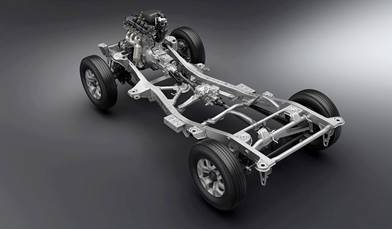
unit - узел, блок, агрегат
gear — шестерня
power transmission –силовая передача
gearbox - коробка передач tractive effort — тяговое усилие running gear — ходовая часть driving wheels — ведущие колеса
steering system — система 46
brakes – тормоза рулевого управления
shaft — вал
car springs — рессоры автомобиля
flywheel — маховик rear axle — задний мост clutch сцепление
final drive — главная передача friction device – фрикционное устройство
axle shafts - полуоси
crankshaft - коленчатый вал
The main units of the chassis are: the power transmission, the running gear and the steering mechanism. The power transmission includes the whole mechanism between the engine and the rear wheels. This entire mechanism consists of the clutch, gearbox, propeller (cardan) shaft, rear axle, final drive, differential and axle shafts.
At the front end of the car is the engine. On the back of it is the flywheel. Behind the flywheel is the clutch. The clutch is a friction device connecting the engine with the gears of the gearbox. The main function of the gearbox is to change the speed of the car.
The power is always transmitted by the cardan shaft to the live back axle. The final
drive reduces the high speed of the engine to the low speed of the driving wheels.
The differential enables the driving wheels to turn at different speeds which is
necessary when turning the car. The foundation of the automobile is the frame to
which different chassis units are attached.
The rear axle is capable of moving up and down about the frame. The rear axle is an important part of the transmission. It carries the greater portion of the weight of the car. The steering mechanism is designed for changing the direction of the car.
The brakes are used for stopping the car, for decreasing its speed and for holding
the car position.
1.differential 2.steering wheel 3.clutch
4.rear axle 5.steering system 6.speedometer 7.brakes 8.gearbox 9.cardan shaft
a).mechanism used to increase the
speed of the car
b).wheel used to turn the direction of
the car
c).mechanism used to transmit power to the back axle
d).instrument used to measure the speed of the car
e).mechanism that slows or stops the
car
f).mechanism used to guide the car g).mechanism used to engage or disengage the engine with gearbox h).mechanism used to carry the greater portion of the car weight e).mechanism used to turn the wheels at different speeds
1. What main units does the chassis consist of?
2. Where is the engine located?
3. Where is the flywheel fixed?
4. Where is the clutch placed?
5. What is the gearbox designed for?
6. By what shaft is the power transmitted to the back axle?
7. What does the rear axle do?
8. What is the function of the differential?
9. What purpose is the steering system designed for?
10. What is the function of the brakes?
Работа с текстом (чтение, ответы на вопросы.)
|
Отметка |
Критерии оценивания |
|
«5» |
Обучающийся понял содержание текста и ответил правильно и полно на все вопросы преподавателя. |
|
«4» |
Обучающийся понял содержание текста и ответил правильно и полно на 2 вопроса. На один вопрос не ответил или дал неправильный ответ. Обучающийся понял содержание текста и дал правильные, но неполные ответы на все 3 вопроса. |
|
«3» |
Обучающийся понял содержание текста, но ответил правильно и полно только на 1 вопрос. На 2 остальных вопроса обучающийся не ответил или дал неправильные ответы. |
|
«2» |
Обучающийся не понял содержание текста и не дал правильные ответы. |

frame — рама twist - кручение support — опора
suspension - подвеска
body - кузов
channel section — полая секция longitudinal members - лонжероны weld —сваривать
cross members — поперечины
rivet — заклепывать
reinforce — усиливать insulate — изолировать rigid — жесткий
rubber pad – резиновая прокладка
mining - прочный
unibody construction — конструкция с несущим кузовом withstand strains — выдерживать нагрузки strengthen – укреплять
The foundation of the automobile chassis is the frame which provides support for the engine, body and power-train members.
Cross members reinforce the frame. The frame is rigid and strong so that it can withstand the shocks, vibrations, twists and other strains to which it is put on the road.
The frame provides a firm structure for the body, as well as a good point for the suspension system. There are two types of frames, namely: conventional frames and integral frames .
Conventional frames are usually made of heavy steel channel sections welded or
riveted together. All other parts of the car are attached to the frame.
In order to prevent noise and vibrations from passing to the frame and from there to the passengers of the car, the frame is insulated from these parts by rubber pads. It is also important to insulate the frame in order to prevent metal- to-metal contacts.
Frameless constructions are called so because they are made integral with the body. The body parts are used to structurally strengthen the entire car. Some unibody frames have partial front and rear frames for attaching the engine and suspension members.
1. The frame provides support for....
2. Conventional frames are made of....
3. Tameless constructions are
made....
4. The frame is insulated from other
5. The frame is reinforced by....
a. channel sections welded together
b. prevent noise and vibrations from
passing to the passengers
c. cross members
parts in order to
d. the engine, body and power train members
e. integral with the body
Task 3. Answer the questions. 1.What does the frame provide? 2.Why is the frame rigid and strong? 3.What types of frames are there?
4. What is the conventional frame made of?
5. By what is the frame insulated from the other car parts? For what purpose?
6. What do you know about unibody frames?
Работа с текстом (чтение, ответы на вопросы.)
|
Отметка |
Критерии оценивания |
|
«5» |
Обучающийся понял содержание текста и ответил правильно и полно на все вопросы преподавателя. |
|
«4» |
Обучающийся понял содержание текста и ответил правильно и полно на 2 вопроса. На один вопрос не ответил или дал неправильный ответ. Обучающийся понял содержание текста и дал правильные, но неполные ответы на все 3 вопроса. |
|
«3» |
Обучающийся понял содержание текста, но ответил правильно и полно только на 1 вопрос. На 2 остальных вопроса обучающийся не ответил или дал неправильные ответы. |
|
«2» |
Обучающийся не понял содержание текста и не дал правильные ответы. |
![]()
Suspension system – система подвески shock absorbers – амортизаторы durability – долговечностьs
spring – рессора
affordability – доступность
adjacent – прилегающий, соседний, смежный
Suspension system is a mechanical system that consists of springs and dampers that are connected to the wheel and chassis of the body. Suspension system is a mechanism which separates body from the wheel. These are mainly designed to maintain the vehicle stability by reducing the effects of improper road surfaces. The main functions of this suspension system are to minimize the acceleration inputs to the vehicle.
There are two general classifications of suspension systems known to date; dependent and independent. A dependent suspension system connotes that there is a beam or axle that connects the left wheel to the right so they work in tandem with each other. This classification of suspension can be sprung by either a combination of leaf springs and shock absorbers or coil springs and shock absorbers. This simple structure is what makes it rugged and cheap, allowing manufacturers to put it in mass-market vehicles that demands durability and affordability.
Unlike its counterpart, this type of suspension system does not feature a bar connecting both wheels. Rather, each wheel is given its own spring and shock combo, which gives a more comfortable riding experience. That’s because a bump or pothole that affects one wheel won’t influence the other – meaning, when one wheel is pushed upwards by a bump, the adjacent wheel will stay on the ground unaffected. Independent suspension systems can be used either in front or rear, with the former being the common nowadays to keep the front wheels on the ground and pointing the car in the right direction.
Task 2. Answer the questions.
1) There are two general classifications of suspension systems known to date;
dependent and .
2) Suspension system is a mechanical system that consists of and
dampers that are connected to the wheel and chassis of the body. absorbers
chasses
springs
shock
3) The main functions of this suspension system are to minimize the acceleration inputs to the .
chassis vehicle acceleration wheel
4) A Suspension system connotes that there is a beam or axle that connects the left
wheel to the right so they work in tandem with each other.
a) true b) false
5) Suspension system is a chassis which separates body from the wheel.
a) true b) false
Чтение с полным пониманием содержания (изучающее)
Оценка «5» ставится обучающемуся, когда он полностью понял несложный оригинальный текст. Он использовал при этом все известные приемы, направленные на понимание читаемого (смысловую догадку, анализ).
Оценка «4» выставляется обучающемуся, если он полностью понял текст, но многократно обращался к словарю.
Оценка «3» ставится, если обучающийся понял текст не полностью, не владеет приемами его смысловой переработки.
Оценка «2» ставится в том случае, когда текст обучающимся не понят. Он с трудом может найти незнакомые слова в словаре.
Критерии оценивания лексико-грамматического теста
Оценка «2» - процент правильных ответов менее 70%
Оценка «3» - процент правильных ответов составляет 79-70%
Оценка «4» – процент правильных ответов составляет 89-80%
Оценка «5» – процент правильных ответов составляет 100-90
Тест на знание автомобильной лексики
1. You see the road through it.
a. windscreen
b. carburetor
c. ignition
d. spark plugs
e. timing chain
2. When you want to go faster, you press this.
a. brake pedal
b. clutch
c. gearbox
d. accelerator
e. carburetor
3. You turn these on when it is dark so you can see the road.
a. headphones
b. headlights
c. taillights
d. panel lights
e. spotlights
4. Whenever you want to shift up or down, you press this down.
a. gearbox
b. gas
c. accelerator
d. clutch pedal
e. brake pedal
5. This cools down your engine.
a. radiator
b. battery
c. distributor
d. taillights
e. pump
6. This provides your battery with the electricity it needs.
a. spark plugs
b. ignition
c. generator
d. accumulator
e. alligator
7. If the road is bumpy, these help to dampen the bumps.
a. fenders
b. bumpers
c. shock absorbers
d. turn indicators
e. steering wheel
8. If you want to turn left or right, you put these on.
a. headlights
b. turn indicators
c. horn
d. steering wheel
e. rack and pinion
9. You use this when you start a cold engine.
a. brakes
b. choke
c. amp meter
d. fuel tank
e. gearbox
10. This lubricates your engine.
a. grease
b. fuel
c. water
d. oil
e. cream
Критерии оценивания для теста
Оценка «2» - процент правильных ответов менее 70%
Оценка «3» - процент правильных ответов составляет 79-70%
Оценка «4» – процент правильных ответов составляет 89-80%
Оценка «5» – процент правильных ответов составляет 100-90%
3.2. Задания для промежуточной аттестации.
Дифференцированный зачет
Условия выполнения задания:
1. Задания выполняются в аудитории во время занятий
2. Максимальное время выполнения заданий: 45 минут
3. Вы можете пользоваться словарем
Критерии оценивания лексико-грамматического теста
Оценка «2» - процент правильных ответов менее 70%
Оценка «3» - процент правильных ответов составляет 79-70%
Оценка «4» – процент правильных ответов составляет 89-80%
Оценка «5» – процент правильных ответов составляет 100-90%
The exterior (Внешнее устройство автомобиля)
1. Label the parts of the
car (Соотнесите названия частей автомобиля с цифрами. Напишите перевод слов) 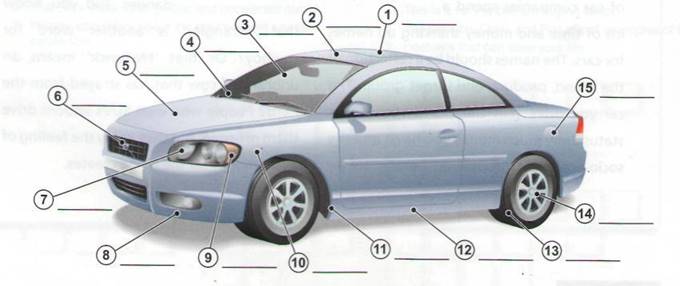
bonnet • front bumper • headlight • indicator • petrol cap or flap • roof •
sill • sunroof • tyre
• wheel arch • wheel trim • logo • windscreen • windscreen wiper • wing

aerial • badge • boot • door • door handle • exhaust pipe • number plate • rear bumper
• rear window • wing mirror • side window • rear light
2. Complete the sentences with words from exercise 1. (Заполните пропуски в предложениях словами из упражнения №1)
1. You open the_____bonnet_____to look at the engine.
2. The… absorb small impacts in an accident.
3. Don't forget to retract the… before using the car wash.
4. Can you put my suitcases in the …, please?
5. When it starts raining, you need to switch on the ....
6. 'What model is that?' 'I don't know, I can't see the… from here.'
7. It is important to inflate the…. to the correct pressure for better fuel consumption.
8. The Mercedes star is a well-known...
9. Open the… and let some sun and fresh air into the car.
10. I wish all drivers would use their …when they want to turn right or left!
3. The interior (Внутреннее устройство автомобиля)
Label the parts of a car
interior (Соотнесите названия частей автомобиля с цифрами. Напишите перевод слов.)![]()
accelerator • air vent • airbag • ashtray • brake pedal • car seat (headrest) • cigarette lighter • clutch pedal • cup holder • dashboard • door handle • door tray • gearstick • glove compartment • handbrake • hands-free telephone • horn • ignition • rear-view mirror • seat belt • steering wheel • sun visor
4. Complete the sentences with words from exercise 1. (Заполните пропуски в предложениях словами из упражнения №1)
1. It`s so practical to have a …near the steering wheel. I can take a drink whenever I want.
2. In a car with manual transmission, you need to press the… when you want to change gear.
3. There's usually a cosmetic mirror on the passenger's …
4. I have a leather… It's not so cold for my hands in the winter and it gives you a good grip.
5. It's against the law to phone while driving so I've ordered a car with a…
6. Could you have a look in the road atlas? It's in the …
7. I don't need a… as I don't smoke and I don't want anyone to smoke in my car.
8. Could you close the…? I'm getting a draught.
5. Match the numbers with the names of the instruments. (Соотнесите названия панели инструментов с цифрами)
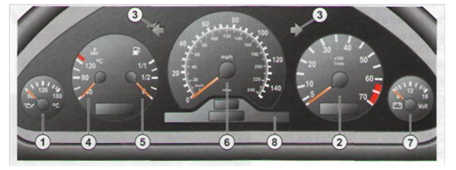
coolant temperature gauge
driver information system
engine oil temperature gauge
hazard warning/indicator lights
fuel gauge
rev counter speedometer
voltmeter
6. Look at the picture in exercise 3. Which instrument: (Посмотрите на рис. в упр.3. Какой инструмент вы используйте для….)
1. shows you how fast the car is travelling?
2. warns you if the engine lubrication system gets too hot?
3. shows that you are indicating to turn left or right?
4. shows you how often the engine is turning over?
5. shows you how much petrol you have in the tank?
6. indicates the voltage of the car's electrical system? _______________
Ключ для контроля правильности выполнения теста за седьмой семестр
The exterior (Внешнее устройство автомобиля)
1. Label the parts of the car (Соотнесите названия частей автомобиля с цифрами.
|
1. sunroof 2. roof 3. windscreen 4. windscreen wiper 5. bonnet 6. logo 7. headlight 8. front bumper 9. indicator 10.wing 11. wheel arch 12. sill 13. tyre 14. wheel trim 15. petrol flap |
16. wing mirror 17. side window 18. rear window 19. aerial 20. badge 21. number plate 22. boot 23. rear bumper 24. exhaust pipe 25. rear light 26. door 27. door handle |
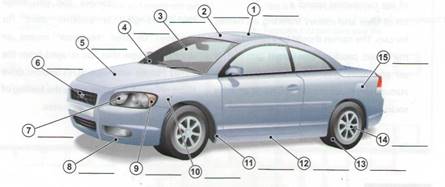
bonnet • front bumper • headlight • indicator • petrol cap or flap • roof • sill • sunroof • tyre
• wheel arch • wheel trim • logo • windscreen • windscreen wiper • wing
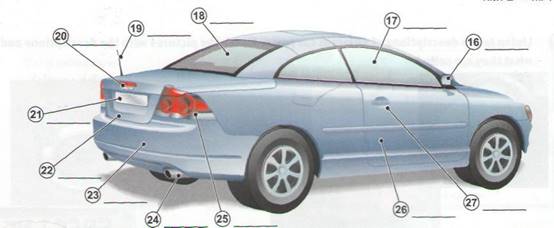
aerial • badge • boot • door • door handle • exhaust pipe • number plate • rear bumper
• rear window • wing mirror • side window • rear light
2. Complete the sentences with words from exercise 1. (Заполните пропуски в предложениях словами из упражнения №1)
1. You open the_____bonnet_____to look at the engine.
2. The bumpers absorb small impacts in an accident.
3. Don't forget to retract the aerial before using the car wash.
4. Can you put my suitcases in the boot please?
5. When it starts raining, you need to switch on the windscreen wipers.
6. 'What model is that?' 'I don't know, I can't see the badge from here.'
7. It is important to inflate the tyre to the correct pressure for better fuel consumption.
8. The Mercedes star is a well-known logo.
9. Open the sunroof and let some sun and fresh air into the car.
10. I wish all drivers would use their indicator when they want to turn right or left!
3. The interior (Внутреннее устройство автомобиля)
Label the parts of a car interior (Соотнесите названия частей автомобиля с цифрами. Напишите перевод слов.)
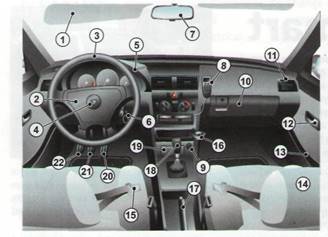
accelerator • air vent • airbag • ashtray • brake pedal • car seat (headrest) • cigarette lighter • clutch pedal • cup holder • dashboard • door handle • door tray • gearstick • glove compartment • handbrake • hands-free telephone • horn • ignition • rear-view mirror • seat belt • steering wheel • sun visor
|
1. sun visor 2. airbag 3. steering wheel 4. horn 5. dashboard 6. ignition 7. rear-view mirror 8. hands-free telephone 9. cigarette lighter 10. glove compartment 11. air vent |
12. door handle 13. door tray 14. car seat 15. seat belt 16. cup holder 17. handbrake 18. gearstick 19. ashtray 20. accelerator 21. brake pedal 22. clutch pedal |
4. Complete the sentences with words from exercise 1. (Заполните пропуски в предложениях словами из упражнения №1)
1 It`s so practical to have a cup holder near the steering wheel. I can take a drink
whenever I want.
2 In a car with manual transmission, you need to press the clutch pedal when you want to
change gear.
1. There's usually a cosmetic mirror on the passenger's sun visor.
2. I have a leather steering wheel. It's not so cold for my hands in the winter
and it gives you a good grip.
1. It's against the law to phone while driving so I've ordered a car with a hands-free telephone .
2. Could you have a look in the road atlas? It's in the glove compartment.
3. I don't need a cigarette lighter as I don't smoke and I don't want anyone to smoke
in my car.
8 Could you close the air vent? I'm getting a draught.
5. Match the
numbers with the names of the instruments. (Соотнесите названия панели инструментов с цифрами) 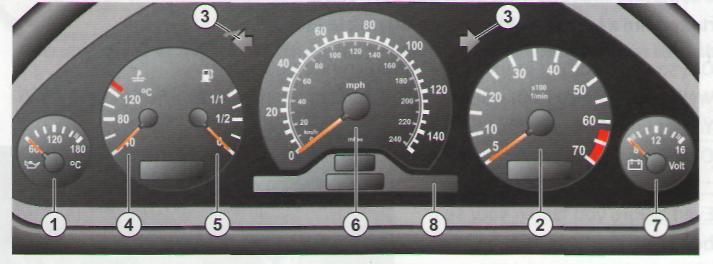
4.coolant temperature gauge
8.driver information system
1. engine oil temperature gauge
3.hazard warning/indicator lights
5. fuel gauge
2. rev counter 6.speedometer
7.voltmeter
6. Look at the picture in exercise 3. Which instrument: (Посмотрите на рис. в упр.3. Какой инструмент вы используйте для….)
1. shows you how fast the car is travelling? speedometer
2. warns you if the engine lubrication system gets too hot? engine oil temperature gauge
3. shows that you are indicating to turn left or right? indicator lights
4. shows you how often the engine is turning over? rev counter
5. shows you how much petrol you have in the tank? fuel gauge
6. indicates the voltage of the car's electrical system? voltmeter
7. Скачано с www.znanio.ru
Материалы на данной страницы взяты из открытых источников либо размещены пользователем в соответствии с договором-офертой сайта. Вы можете сообщить о нарушении.